

GRAFT gadfly THIRTEEN


Gadfly is supported by & Columbia University Undergraduate Philosophy Department
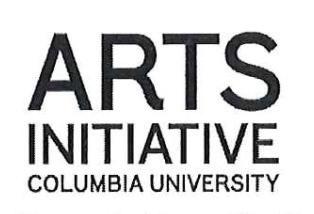
Editors
Editors-in-Chief
Aharon Dardik & William Freedman
Managing Editor Eitan Zomberg
Chief Article Editor Ray Knapick
Chief Column Editor Amelia Landis
Chief Interview Editor Oscar Luckett
Discussion Coordinator Xavier Stiles
Chief Design Editor Michi Parsa
Chief Art Editor Mim Datta
Editors
Copy Editors
Ignacio Hale Brown, Jayin Simh
Article Editors
Tessa Bannink, Yael Bright, Ignacio Hale Brown, Shrina Dong, Nora Estrada, Bohan Gao, Imme
Koolenbrander, Joseph Said Kwaik, Annie Lind, Daniel Nitu, Telvia Perez, Jayin Sihm, Sebastian
Verelli, Iris Wu
Columnists
Brittany Deng, Mica Helder-Lindt, Yongjae Kim, Daniel Knorek, Josephine O’Brien, Hanbo Yang
Interviews Editors
Camille Duran, Artemis Edison, Yunah Kwon, Yoav
Rafalin, Oscar Wolfe
Artists
Michi Parsa, Mim Datta, Anna Bruhn, Cornelia
Manzi, Aaron Shklar
Letter
Reema Zhalka, ed. Bohan Gao
Fleeing the Feed: Thoughts on Social Media and Girard’s Mimetic Theory of Desire
Daniel Knorek, ed. Joseph Said Kwaik
Songs of Eternity, or Wisps in the Ether
Ignacio Hale Brown, ed. Daniel Nitu, Sebastian Verelli
The Orace and the Loom: AI as Failed Graft
Payge Hardy, Ed. Iris Wu, Imme Koolenbrander
Gentrification as a Skin Graft: An Ethical Failure Masquerading as a Cure
Christopher Smith ed. Telvia Perez, Joseph Said Kwaik
The Transparent Connection: An Existentialist View of Identity
Ryan Marienthal ed. Jayin Simh, Telvia Perez
Make Again: The Fiction of Renewal
Ariel Vargas ed. Iris Wu, Annie Lind
Perfectly Powerless: The Paradox of Girlboss Feminism
Brittany Deng, ed. Imme Koolenbrander
Transcending Kith and Kin: Michael Morris on Group Identity
Oscar Wolfe ed. Yoav Rafalin
Fluid Divine Bodies: Benjamin Sommer on Syncretism, Coproduction, and God’s Bodies
Yoav Rafalin ed. Oscar Wolfe
Letter from
As a club engaged and invested in academic philosophy, we’ve heard no shortage of criticisms of our discipline. Philosophy endures accusations of being solely concerned with abstract theorizing, of being unrooted from the real world. In some ways, we are sympathetic to elements of this critique. Fundamentally, philosophy deals with conceptual matters. Unlike the medicines and agricultural practices we get from biology, there are no concrete innovations or discoveries to measure the merit of a work of philosophy. There are no philosophical machines or instruments that would verify the success of our discipline’s axioms.
This tension between grounding and abstraction is one that the entire history of philosophy has grappled with, but few proposed solutions are as famous as René Descartes’: I think, therefore I am. Descartes responded to philosophy’s central contradiction with
radical skepticism, asserting that the only claims that could be known were those that were true by virtue of pure logical necessity. In doing so, Descartes took up the role of the philosophical hermit, secluding himself from the complexities of the outside world, rooting his thoughts only in the internal clarity of the mind.
While one might see Descartes’s project as admirable, we at the Gadfly have a hard time seeing it as anything other than fundamentally flawed. In his attempt to ground thought in the objective, Descartes necessarily avoids massive swaths of the human experience. His attempt to refine philosophy into a hyper-rationalist, modernist discipline ultimately privileges disembodied reason over the messy, embodied complexity of the rest of human life. In her essay “The Cartesian Masculinization of Thought,” Susan Bordo describes this as “an attempt to escape from history, culture, and
the Editors
human finitude.” For Bordo, the result is a kind of philosophical barrenness, a discipline that forgets the very ground from which human thinking occurs. Descartes’s approach, while elegant, is built on a narrow foundation that limits the ideas it is able to produce. The system’s problem is not its correctness, but its scope.
Still, the appeal of Descartes’s approach is hard to deny. There is something unavoidably attractive about the dream of an epistemology modeled after mathematics: clean, axiomatic, and airtight. Descartes offers philosophy a robust root system on which to stand, a world in which moral and political questions might be resolved with the precision of a proof, where uncertainty is an error to be corrected rather than a condition to be endured. It’s a comforting fantasy, a world where reason alone can solve any problem. But this vision, no matter how appealing, collapses under the weight of human complexity.
At the other extreme from Descartes, philosophy can drift into abstraction for its own sake. One struggles to find the urgency behind the fiery debates between Neoplatonists and Boethius over whether harmony is a gift from the Demiurge or intrinsic to reality. That such questions could dominate philosophical discourse reveals an inverse danger: a philosophy insufficiently grounded in a common human experience. Unlike Descartes’s philosophy founded on universal certainty, which is abstract in its own way, this philosophy is abstract due to the varied dogmatic assumptions it relies on that most people hesitate to accept. Philosophy like this becomes so detached from the world that it feels more like an elaborate performance— beautiful, perhaps, in its complexity and rigor, but ultimately forsaking any living connection to the human condition.
Where Descartes’ problem was planting too few
roots—so cautious in his foundations that his philosophy could only grow in narrow, rigid forms— this tradition represents the opposite flaw. Here philosophy becomes unstable: sprawling, ornate, and systematic, yet resting on assumptions that bear no real relation to the world we inhabit. Far too often, these systems rely on dogmatic premises that, while internally coherent, offer little to the convoluted realities of human life. The result is a discipline that expands endlessly but struggles to produce conclusions we can find meaningful or true.
Philosophy, then, must find another way. If it cannot take independent root, nor survive as a floating, untethered system, it must graft itself onto the richness of lived experience.
Grafting is a process of joining—taking something delicate, something unable to survive alone, and binding it to a living base that can sustain it. The graft remains distinct, but it grows through its attachment to something larger. Sometimes it strengthens the host; sometimes it draws from
it. But either way, the resulting synthesis is more than the sum of its parts: two distinct elements, not indistinguishable from one another, but nevertheless inseparable. We believe the best philosophy is done by those who embrace this ethos—who draw from the nuances of human life without being consumed by them, who remain distinct from, yet sustained by, the world they inhabit.
Philosophy must grow this way. It cannot be grounded solely in the irreducible axioms of Descartes, nor built upon the intricate but untethered systems of the mystics and scholastics. It must be nourished by life itself. New ideas do not emerge from pure logical necessity, nor from speculative invention. They emerge from the messy, discursive relationships between people—planted in history, culture, and lived experience. Good philosophy is done not by those who isolate themselves from life, but by those who live fully within it. At the Gadfly, we do philosophy because the world we inhabit allows and dares us to question it.
Our focus on philosophy emphasizes its intersections: with literature, with science, with politics, with art, with life itself. We believe that philosophy divorced from a robust experience of the world is missing something crucial. Our writers and editors create extraordinary work precisely because they recognize that their diverse lives are not an obstacle to philosophy, but its subject and deepest source. At The Gadfly, we have tried to honor this conviction. In this issue, you will find essays that take philosophy beyond its traditional enclosures—grafting it onto new materials, binding it to lived experience, and letting it grow in unexpected directions.
Reema Zhalka’s poem Rejection sets this tone. The gravity of her words practically recreates the sensation of weaving a painful intimacy, stitching together futility and yearning with raw, tactile imagery. Each line pulls tighter the thread between bodily decay and emotional collapse, binding family wounds in silence. The act of mending becomes both tender and tragic, a ritual
of hope and hopelessness performed on rotting material. Zhalka’s message ends hanging in place, the condition of being tied too close together articulating a love both offered and rejected in equal measure.
Daniel Knorek’s Fleeing the Feed: Thoughts on Social Media and Girard’s Mimetic Theory of Desire explores the tangled roots of desire in the age of social media, turning to René Girard’s theory of mimetic rivalry to understand the endless cycle of envy and self-blame modern platforms cultivate. Through personal reflection and philosophical analysis, Knorek explores how capitalism exploits our most intimate insecurities, grafting artificial needs onto our sense of self. His essay challenges us to recognize the hidden violence in comparison—and to seek peace not by fulfilling our desires, but by questioning them.
In Ignacio Hale Brown’s Songs of Eternity, or Wisps in the Ether, the fleetingness of human life meets the strange endurance of art. Reflecting on ancient statues, epic poetry, and Renaissance sonnets, Brown
explores how fragments of individual lives—real or imagined—are grafted into the works they leave behind. Drawing on Shakespeare, Gilgamesh, and Ozymandias he considers how art does not merely preserve memory, but breathes new life into it. Through the fragile vessels of language, sculpture, and imagination, lives long past continue to grow, transform, and reach us in the present.
In The Oracle and the Loom: AI as Failed Graft, Payge Hardy reveals artificial intelligence not as an extension of human knowledge, but as a fraudulent graft—a system that mimics wisdom while hollowing out the very conditions that make truth and deliberation possible. Through dialogue with Plato, Kant, and Arendt, she exposes the profound epistemic and political dangers of surrendering judgment to machines.
In Yongjae Kim’s Phenomenology of a Subterranean Lyric Documentary Walker Evans’s secret subway portraits become the starting point for a meditation on how art grafts meaning onto the fleeting moments of
human life. Engaging with Susan Sontag’s critique of photography and Maurice MerleauPonty’s phenomenology of perception, this essay explores how Evans’s images balance documentary precision with lyrical interpretation. In capturing the dim, unguarded faces of a vanished world, Evans does more than document— he grafts human experience onto photographic form, preserving presence even as it slips into absence.
In Gentrification as a Skin Graft: An Ethical Failure Masquerading as a Cure, Christopher Smith explores how gentrification, like a graft gone wrong, integrates itself into the body of a community only to corrode it from within. Through the lenses of Martha Nussbaum’s capabilities theory and Marx’s analysis of labor and alienation, Smith reveals how surfacelevel prosperity masks deeper displacements of agency, play, and affiliation— and calls for a reevaluation of economic “progress” through a moral lens.
In Ryan Marienthal’s The Transparent Connection:
An Existentialist View of Identity, the pursuit of idealized selves becomes both a source of despair and an opportunity for transformation. Drawing on Kierkegaard’s account of existential alienation and Nietzsche’s vision of self-creation, this essay explores how attempts to graft abstract identities onto ourselves can sever us from the realities of who we are. It argues that true identity is not imposed from the external world, but designed from within—woven from our limitations, histories, and daily acts of becoming.
In Make Again: The Fiction of Renewal, Ariel Vargas exposes the MAGA project as an impossible graft: an attempt to stitch a fabricated past onto a fractured present. Through an analysis of architecture, political mythmaking, and cultural reproduction, this essay shows how MAGA’s promise of restoration inevitably creates a fiction—one that denies history, distorts identity, and weaponizes nostalgia in the service of power. In Perfectly Powerless: The Paradox of Girlboss
Feminism, Brittany Deng unmasks the graft inherent in strains of girlboss feminism, drawing on Michel Foucault’s theory of power and Serene Khader’s critique of the Judgment Myth to explore how the aesthetics of confidence and choice can become mechanisms of control.
Oscar Wolfe’s interview with Professor Michael Morris frames culture itself as a living graft: stitched together from instincts that once kept small bands alive. In this conversation, Morris traces how our peer loyalties, our hunger for heroic status, and our reverence for ancestors intertwine to create the cultures we inherit—and sometimes reshape. In an age of crisis, when tradition and innovation are forcibly spliced together, Morris warns that understanding how identities evolve is essential if we are to avoid mistaking nostalgia for progress.
In his discussion with Yoav Rafalin, Benjamin Sommer dismantles the myth of religious purity, revealing a tradition grown through endless grafting: of ideas, practices, and
metaphysical visions.
Ancient Israel’s conception of God, he argues, was not a static inheritance but a hybrid organism— shaped by internal debate, cross-cultural contact, and evolving perceptions of divine embodiment. Sommer challenges us to see theology itself as a living coproduction, a body stitched together across time by the persistent human yearning to grasp the ineffable.
Philosophy must take root somewhere, but it cannot be in isolation. It must draw strength from human experience without being wholly absorbed by it. Grafted thought is thought that can grow, that can evolve and adapt. This issue of the Gadfly carries that conviction. Its essays, poems, and reflections engage with literature, science, technology, pop culture, and politics—not as distractions from philosophical thought, but as its source and its context. In helping to cultivate this issue, we have tried to hold true to that belief. As outgoing editorsin-chief, all we can do is hope that we have been good stewards of this publication
and community, and that the parts of ourselves grafted onto every page of this magazine will continue to grow in new directions we could never have predicted, shaped by the voices and visions of future contributors.
Best, William Freedman and Aharon Dardik



Rejection

Reema Zhalka Ed. Bohan Gao, Ignacio Hale Brown

There’s no sense in sutures over necrotic tissue. But the faithful needle threads together joining patches of yarn squares in neat, tidy rows coiled tight around the skin gripped in place despite its inflammation.
Thick fabric stretches over the chasm of the mouth –sewn shut.
And though the tip dulls it still sews attempts to mend, to make amends –to stitch us back into place at the dinner table.
No amount of embroidered hearts can disguise a festering breeding ground, yet here we still sit eating my mother’s spread all homemade never once looking up to say thanks, our mouths too full for words.



I’ve always been fascinated by the monetization of our relationships that has taken hold with the advent of the Internet Age and the rapid increase in the sheer volume of advertising. I grew up watching an unhealthy amount of television and YouTube, and the impact of advertising upon the individual has intrigued me for as long as I could critically consider the point of an advertisement. Acknowledging the presence of products is almost a prerequisite to navigating the digital and physical realms. From visual advertisements along the tops of subway cars to a fifth of primetime television going to commercials, we are
simply overwhelmed with the opportunity to see things we don’t have. Social media is the ultimate manifestation of this phenomenon: what was once a fun way to keep in touch with your friends has gradually morphed into a premier opportunity for capitalism. There is no shortage of work done on the ways in which social media enforces an ideology of collective, non-individualized, trendbased consumerism, but I have always been more interested in its impact on the individual: what does it mean to be an individual engrossed in such a massive web of consumerism? There is no shortage of evidence of its impact on

body image, self esteem and overall mental wellness, but the motivating factors behind those findings are wide-ranging. It was in my dive for discussion on this topic that I stumbled upon René Girard’s theory of mimetic desire.
The core of Girard’s theory of mimetic desire lies in the belief that our desires are not inherent. Rather, they emerge from a communal endowment of value unto goods and qualities. Due to this communal understanding of value, we are inclined to want and take things that other people have, grafting them onto ourselves through some sort of manifested violent act. This is mimetic desire in essence. Girard writes in his 1972 text Violence and the Sacred, “Whenever the disciple borrows from his model what he believes to be the ‘true’ object, he tries to possess that truth by desiring precisely what this model desires. Whenever he sees himself closest to the supreme goal, he comes into violent conflict with a rival. By a mental shortcut that is both eminently logical and self-defeating, he convinces himself that the violence itself is the most distinctive attribute of this supreme goal.” Girard’s understanding of desire and the inherent comparison within it explains the roots beneath
social media’s obsessively comparative nature, and helps explain the inherent frustration and mental strife that accompanies it. In order to fulfill that desire and break through to a satisfactory conclusion, Girard finds it absolutely essential that violent acts emerge as the catalyst towards the end goal. This is where my personal experience with mimetic desire comes in, and how I did my best to control my unconscious, uncontrollable tendency to envy.
In the summer of 2024, I had found myself growing more and more insecure about my self-perceived lack of success. I was going home for the summer instead of landing a prestigious internship in New York City, cramped up at home instead of traveling the world, and just generally found myself unable to meet the lofty goals I was setting for myself. Others were taking trips abroad with their families, while I was driving up to my local Walmart to buy a pint of ice cream. I wanted to take their best moments and make mine comparable, grafting these inauthentic, curated experiences onto my own life, a manifestation of my own unconscious mimetic desire. Comparison is the thief of joy, after all.
After spending way too much time looking at what other people were doing, and being fully aware that the way I was comparing myself to others was unhealthy, I tried to make a change. I “soft-quit” social media at the beginning of the academic year. I deleted X/ Twitter, TikTok, and restricted the use of Instagram and Reddit to my laptop for what I called “business purposes only.” If I needed to access important information through those platforms I would use them, but would do so consciously and with full understanding that gathering that information was the only thing I could use them for. I successfully knocked my screen time down by a few hours over the following five months. I read more, got outside more, and spent more time with my close friends. Despite those happy moments, living in NYC and trying to hold onto that blissful mindset still felt like a big challenge. After all, New York City is one of the biggest cultural epicenters in the world, and escaping the onslaught of knowledge was basically impossible, no matter how many guardrails I placed for myself. Everywhere I turned, all I could notice was advertisements for new products, advertised by
people and companies that I envied for various different reasons. I heard about the successes of others and was proud of them or happy for them, yet I simultaneously found myself quietly jealous of their successes compared to my adequacies, or occasional inadequacies. When it came down to it, I realized that Girard’s theory perfectly encapsulates my—and many others’—feelings on social media and helps explain how it makes us feel the way we do. Mimetic desire causes us to villainize ourselves, to treat ourselves—whether it be our background, our achievements or our skills—as the very reason for our failures, the very reason for us not having what we want.
Girard takes steps to distinguish mimetic desire and mimesis from imitation, which he sees as a conscious replication of another’s behavior, which leads to positive reinforcement and learning. Mimesis, on the other hand, is a wholly subconscious negative response that often leads us into rivalry, our desire for possession of that object—and inability to have it—leading us to find ways to purge ourselves of those negative feelings of not-having,

either by taking the object or finding a way to eliminate the roadblocks to possessing it. In this lies the catch in Girard’s theory that hones in on our modern communities: Desire is not desire if the person who desires has the object of interest. There must be some inhibiting force that is keeping the individual from having the object to fulfill that desire. Girard claims this withholding figure to be the scapegoat of mimetic theory, who plays the unfortunate role of suffering in order to create an artificial peace through violence— physical, mental, social, et cetera—that excises the withholder of the desired from the psyche of the desirer. There are two types of
withholding mediators within the umbrella term of “scapegoat,” those being the external mediator and the internal mediator. The external scapegoat serves as a distinct entity: someone who holds the quality or object of desire but is wholly outside the sphere of the individual. I may want to swim like Michael Phelps, but I am not a swimmer on the level of Michael Phelps and cannot reasonably consider myself his rival, for example. Therefore, I do not want to fight Michael Phelps: He is simply on a different level than me. In many modern situations, the external mediator’s desirable qualities actually weave themselves in with the object of desire, or even become the
object of desire itself. Bradley Hoos of Forbes writes about this extensively in his article Mimetic Desire: The Secret Behind Effective Influencer Marketing. “When any creator associates themselves with a brand, psychology tells us that it forms an unspoken promise in our minds. We begin to associate that brand with an identity we desire. Influencer marketing works because we naturally want to organize ourselves into groups that make us feel safe and normal within them.” Hoos draws a strong connection between the manifestation of the external mediator and the manifestation of the object of desire as being intrinsically linked concepts, a duo that permeates the vast majority of our modern advertising culture. However, on the other end of the spectrum lies the internal mediator, the one many people find themselves matching up to and the one
that is growing increasingly more common when social media more intimately occupies our understanding of our relationships to other people. These are the people we can form rivalries with because they are accessible. They are our coworkers, our classmates and our family members, no longer characters on our screens or our billboards. Their possession of things that someone near them wants spurs a more direct comparison, and therefore a more direct form of action.
Modern readers of Girard are conflicted on how social media and the internet have reduced the degree of separation between the external mediator and the desirer. Some Girard readers believe “cancel culture” to be the next iteration of this violent phenomenon: the reckoning with painful external mediators through societal

rejection, so to speak. In fact, the webpage MimeticTheory. com—managed by an offshoot organization under the Catholic University of America, strangely enough—describes it as “bloodyless scapegoating.” However, I believe that my experience with social media offers an alternative lens to the phenomenon. Rather than purging undesirable people around us who we believe contribute to our have-nots, the external scapegoat has pushed into our self-reflection. Although there are plenty of people who believe that their personal failures are due to external forces, there are just as many people who see their failures as a natural extension of themselves. We have become our own scapegoats through our constant, forced opportunities to compare due to the new level of intimacy we have with what we perceive to be the qualities of one another as a result of our social media habits and as a result of our insistent desire to connect with others through unhealthy comparisons. This becomes a cyclical phenomenon of purging, one that Girard mentions extensively in his writings in the 1988 collaborative work Violent Origins: “To the entire community, the crisis and its
resolution become a positive model of imitation and counterimitation. The mimetic urge has now turned peaceful and culturally productive, because it consists in doing again and again what the victim did or suffered that resulted in a great good for the community.” Through social media’s central role in advertising, almost every mediator has become internal, one way or another. We see someone else hustling for several hours before their workday or their classes and pity ourselves for not being that driven or that effective, and this is merely one example. My past only affirms this: Seeing other people’s awesome vacations and cool internship experiences inspired me to want to do things to get myself to that level, but for one reason or another, I could not. Our desires have intensified and become internalized to such an extent that they are simply a natural extension of our insecurities, and capitalism has swooped in like the bird of prey it is and exploits our desires to perfection.
My desires did not go away when I stepped back from social media. I still wanted that internship, I still wanted to travel abroad, and I most
certainly still wanted things. I spent a lot of money on nice food, video games, books, and other things I’m personally interested in. However, without a model to compare to, I wasn’t encountering that same tension. What was my scapegoat? How did I push through that concern that I had been feeling before without fulfilling my desire? Girard believes that the key to not enacting that intense violence is to purge via lesser, “unconscious” violence. Social media created a plethora of scapegoats, a wide-ranging group of individuals who I envied for various reasons and therefore developed unhealthy perceptions of. In this case, deleting social media was that “unconscious” violence, as it allowed me to excise those scapegoats from my mind, literally removing them from my psyche and preventing the existence of the scapegoat in the first place. Deleting social media served as the removal of an external mediator beyond the physical mediators. Instagram, to me, held all of that which I desire but I am neither able to acquire nor destroy. Although I didn’t use social media explicitly to feed those feelings of desire, the lack of that presence within my life prevented me from running into those situations
again, reaching a similar level of artificial peace.
At the end of the day, my experience in the context of Girard’s theory is not just about desire and what you think you want—it’s also about the validation experienced through playing into the systems that permit his theory to function to the extent that it does. Existing within a society that glorifies consumerism and buying as a whole continuously presents the individual with opportunities to form those unhealthy relationships with mediators, both external and internal. I think, after having plenty of time to reflect, that social media is not healthy for us as individuals. This is unsurprising in many ways: there are plenty of studies as to the negative contributions of social platforms upon mental health, fiscal responsibility and relationship-building skills. With Girard’s theory in mind, the removal of social media—exemplified by my experience—inherently limits the ability to play into this intensification of mimesis and the self-villainization we have become so familiar with in our day-to-day digital lives. When it comes down to it, the internal impact of advertising and the potential for those negative
interactions can never be fully purged. The can will simply continue to be kicked down the road: It is our jobs as players in that mimetic system to recognize it as best we can and live more consciously. When we live in the moment, think about our actions and work hard to ensure that we are not unconsciously taking up these unhealthy mimetic dynamics, we can perhaps give ourselves just a moment of respite from the difficulties of the world around us. We cannot escape the onslaught of capitalist, comparative consumerism, especially within the American context. What we can do, however, is learn to love ourselves. Even if that means loving ourselves for our havenots.
Songs of Eternity or Wisps in the Ether
Ed. Daniel Nitu, Sebastian Verelli
Ignacio Hale Brown

Afew months ago, I stood for a while at the Metropolitan Museum of Art gazing into the eyes of an Etruscan statue. There was a magical, lifelike quality to it, as if blood flowed through the otherwise static terracotta. Somehow, in the frozen clay, I could feel the woman it was modeled after standing before me. She had been captured—stuck in form but unstuck in time—and her presence transported to the present day.
Only one thing is certain in human existence and in the existence of all living things: death. No matter how hard some people may try, we can never evade it forever. Everyone, someday, will return to the dust from which we came. But there is something magical about dust. It isn’t a river that dries up; it isn’t a flame that burns out. Though invisible, it keeps floating around forever, filling our lungs as we breathe in tastes of the past.
Man may be ephemeral, but the idea of him is not. Our creations seem indomitable: ancient palaces still stand; ancient hymns are still sung. Though these things, too, will one day wither and fade away—buildings become ruins, songs become fragments—they still last millennia
as they watch over countless generations of the men and women who made them.
Is this not, then, a form of life? In the Epic of Gilgamesh, one of the oldest stories ever written, the titular king embarks on a quest to find immortality. After much toil, he is able to find a plant that grants eternal life. But the moment he lets his guard down, a snake appears out of the water and steals the plant away. All hope seems to be lost. Gilgamesh will remain a man and die as eternity remains forever a stranger. But the epic closes by telling its readers that “this too was the work of Gilgamesh... [who] engraved on a stone the whole story.” I sit here, 4,000 years later, reading the words of Gilgamesh, watching him move and breathe through his journey. In The Iliad, Achilles too is forced to face his mortality as he readies for battle. He has two options: he must decide if he wants to run away and live a long life or fight and have a short one with a legacy. If he fights, he says, “My return home is gone, but my glory shall be everlasting.” In the end, he fights and, of course, dies. But his glory is indeed everlasting. Though Achilles may be fictional, The Iliad has rendered him as real as Gilgamesh. He exists in the

collective mind of humanity just as Gilgamesh does. Like Achilles, Homer, the legendary author of The Iliad, was likely not a real person. But as he exists now, he may well have been. Every time The Iliad or The Odyssey is read, its readers conjure up a man in Ionia in the 8th century B.C., standing before a crowd and reciting his great epics for the first time. The ‘lives’ of Homer and Achilles created a story, and their story lives now, 3,000 years later, in the minds of billions. This is a sort of afterlife, and yet it isn’t an imagined world where our consciousness continues. We remain truly dead: there is no more body, no more soul. But still, something seems
to live on. Can a person’s life be grafted into art, be made immaterial? Or rather, can one bestow life onto the material pages? Is this life frozen, still visible but a long-dead fragment of the past? Or does it continue to grow, somehow still breathing, still being that same person, as it survives and evolves amongst humanity?
Four hundred years ago, William Shakespeare grappled with these same questions. Throughout his sonnets, he presents an idea that has been dubbed the “eternizing conceit.” His Sonnet 15 compares men to plants, speaking of how they grow and bloom, but this is all momentary, and we will
eventually decay. He describes himself as being in a war with time for someone he loves. A war against time seems unwinnable for any mortal. And yet, Shakespeare closes the poem with “as he [time] takes from you, I engraft you new.” He is winning the war against time. He has taken a piece of the life of his love and placed it into a poem. But her life hasn’t merely been printed onto a page; it has been grafted. Shakespeare sees this poetry as something that is itself alive. In merging the person with the poem, he allows them to share sap, to share blood. They feed off of each other, each allowing the other to continue living.
He continues this idea in his famous Sonnet 18, which ends, “So long as men can breathe or eyes can see, / So long lives this, and this gives life to thee.” The poem’s survival is the only condition for the survival of its subject. But how does this happen? Is a poem not a fixed image? It was written at a singular point in time, forever entrenched in that moment. Though read over and over again, the words will never change. And though she lived a long and full life, the woman in the poem is eternally limited to fourteen lines of Shakespeare’s perception as he wrote of her. It
is not truly this woman whose life has been made immortal. Instead, a new version of her has been created. It is a reduction of what she truly was, and yet with this reduction a form of her is able to live forever.
In Sonnet 55, Shakespeare seems to clarify this. “Wasteful war shall statues overturn,” he writes, “and broils root out the work of masonry.” Even great monuments come tumbling down. It is not through material record that Shakespeare is able to renew life. Instead, the poem serves as a “living record of your memory.” Again, it isn’t a frozen image, but alive. “You live in this, and dwell in lovers’ eyes,” he says. The attention on it being specifically the eyes of lovers shows the key to this immortality. Words themselves do nothing for the subject. It is in the way they are read that they come alive. Our minds revive the dead as they move within us.
This life does not only continue through literature but also in all art. Every surviving fragment is a vessel for a piece of the past. Percy Bysshe Shelley’s poem Ozymandias details the ruins of an ancient statue of a king in the desert. Words appear on the statue’s pedestal that read, “My name is Ozymandias, King of
Kings, look on my works, ye mighty, and despair!” Shelley follows this up with “Nothing beside remains. Round the decay of that colossal wreck, boundless and bare, the lone and level sands stretch far away.” Shelley seeks to highlight a dissonance between the words the king had written and the state of the king now. He once ruled an empire, but that has now crumbled into nothingness. Yet to me, this does not symbolize the transience of existence. In fact, it shows quite the opposite: its permanence. The face and words of an ancient king, still here millennia later. In it, I can feel the weight of his being, just as I could with the Etruscan woman at the Met. A story or image of the past can be read in multiple ways. It can be a window, whose panes are looked through to glimpse faded memories of long-dead moments. Or it can be a bridge, bringing those moments into the present.
In his book After Babel, Franco-American philosopher George Steiner discusses what he calls “the informing sphere of sensibility”—the vast web of cultural context that surrounds any text at the time of its writing. At the center of that context is language itself: how it’s used, how it changes across place and

time, and how its usage relates to the physical world and to its literal meaning. As time moves on, the intricacies of the specific associations and implications of each word change. Because of this, we will never fully understand texts of the past. Instead, Steiner says, we must “translate out of time.” The words of Gilgamesh, Homer, and Shakespeare are not time capsules. The words may be (mostly) static, but the life they hold is not. With every generation, it takes on new meaning. It is influenced by the world around it and in turn, is constantly able to newly influence the world.
We generally think of life as the sum of experiences in a person’s existence. Though the physical selves of the individuals in these texts have died, the histories of the texts themselves are part of their existence. As the characters are conjured up in readers’ minds again and again, they are kept alive. It is not their lives, however, that are eternally preserved. It is the version of their lives created by the author, and then created anew by the reader, that lives on. The informing sphere of sensibility creates a fleeting moment around each work of art, as does its creator’s perspective. There is an aspect of the person it reflects that will
never exist again. But in reflecting it, it holds some of it. An impression of the person there once was. The woman whose eyes I gazed into at the Met is my imagined perception of the sculptor’s perception of her. But through this perception, a woman who would have died and been forgotten thousands of years ago maintains a form of life in the 21st century. This statue has become a part of her history.
This is the beauty of art. The art, the people in the art, and the art’s creators are all grafted together in a shared eternity. It becomes something new, a fresh life that is an amalgamation of all the pieces that formed it. The full story of Gilgamesh is not just what is told in the epic, and the story of Shakespeare’s lover is not just within his sonnets. The man that was Homer is not just the name of an unknown man printed on the cover of a book. The lives of Ozymandias and the Etruscan woman were not completed when they were sculpted and cast. As pieces of their lives are grafted into art, the presence of the statues, the poetry, the epics themselves, become part of their lives too.

The Oracle
Payge Hardy and the Loom: AI as Failed Graft
Ed. Iris Wu, Imme Koolenbrander
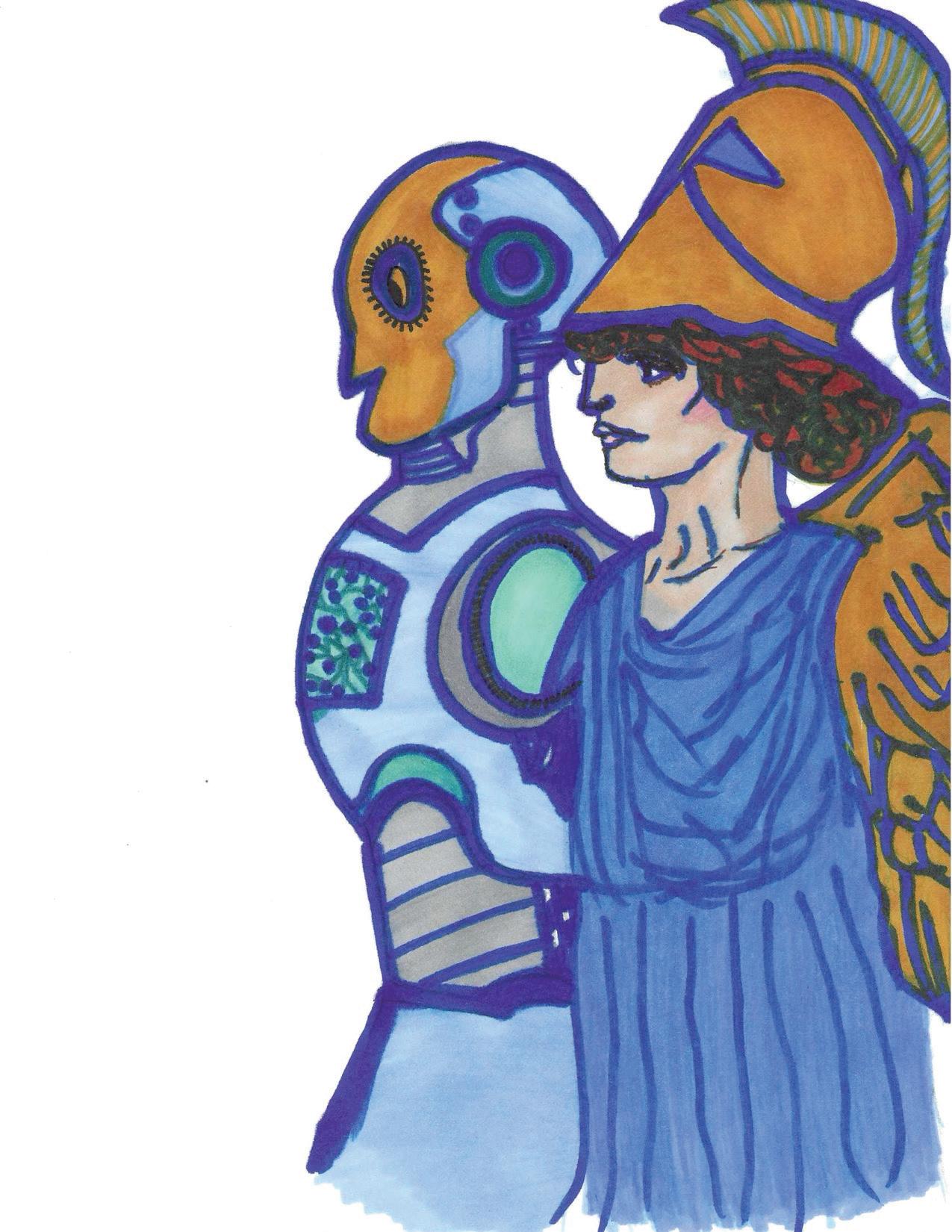

Artificial intelligence pretends to be our infallible oracle, a mind of silicon grafted onto the tree of human knowledge, touted as a source of instant enlightenment. We sought a machine that could mirror all that is known and illuminate what is not—yet, as Hamlet professes, “There are more things in heaven and earth” than are dreamt of in any algorithm. In our hubris, we have grafted a simulacrum of intellect onto a substrate that neither bleeds nor doubts, only to find we have created an uncanny specter of thought rather than its savior. Like a transplanted organ rejected by the host, this graft of “intelligence” has not fused with its body. Instead, it haunts us: an alien appendage with a voice of authority and no soul, promising truth without humility and delivering answers without understanding.
At the heart of this failure is a lack of epistemic humility—for true intelligence requires an awareness of its own ignorance. The ancient philosophers knew that to truly know is also to recognize what one does know—to sense the horizon beyond one’s grasp. Still, our artificial oracle knows nothing of ignorance. It issues pronouncements with unerring confidence, never stopping to
doubt or reflect. It cannot: we did not give it the capacity to question its own output or to contextualize its knowledge in the larger constellation of reality. Such systems do not think in any human sense; they generate outputs by identifying statistical patterns in language data, not by understanding meaning. AI calculates; it does not contemplate.
Everything is here: the minutely detailed history of the future, the autobiographies of the archangels, the faithful catalogue of the Library, thousands and thousands of false catalogues, the proof of the falsity of those false catalogues, the proof of the falsity of the true catalogue… Everything. But we, the imperfect librarians, have interpreted the gibberish.”
– Jorge Luis Borges, The Library of Babel
The result is an oracle of nothingness. Ask it to unveil some deep truth, and it will output something—yet does it signify anything? AI mimics the form of truth by recombining data patterns with breathtaking statistical prowess, and in doing so threatens to make a mockery of meaning. But still, it cannot tell sense from nonsense. A human sage, steeped in life,
might respond to a profound question with silence or careful ambiguity, knowing truth is subtle. The machine, by contrast, has no such humility: it will audaciously pronounce on matters far beyond its ken; it is a tale told by an idiot, full of sound and fury, signifying nothing. These allegedly intelligent machines generate billions of outputs delivered with the authoritative tone of knowledge. Yet peel back the curtain—and there is no Wizard of Oz, no sage insights—only a blind mechanism churning out sequences of symbols.
Our machine oracle holds no beliefs, no biases of its own (aside from the machinations and potentially skewed ethic of its programmers)—but neither does it grasp truth, because it does not seek it as something to be discovered, challenged, and refined through experience and reflection. Since Plato, truth has been treated not as a product to be delivered, but as a horizon approached only through dialectic, lived inquiry, and reflection. AI mimifies the form of truth, and in doing so threatens to make a mockery of meaning.
The philosophical truth is stark: what these systems lack is not just knowledge, but the very
capacity for understanding. They are prisoners of phenomena, of surface patterns, unable to glimpse the noumenal truths behind. We might recall Plato’s allegory: our machine sits at the bottom of the cave, expertly analyzing the shadows on the wall, never perceiving the Forms that cast them. It learns the form of appearance but never the form of reality. Likewise, Immanuel Kant drew a line between the world as it appears and the world in itself: our creation, for all its data, cannot cross or even toe that line. While both Plato and Kant recognized that truth lies beyond immediate grasp, they upheld human capacity— and the moral imperative—to reach toward it. AI, by contrast, remains blithely unaware there is something to reach for. Its alleged intelligence is an imitation circumscribed by what has been fed; it lacks the spark by which the mind reaches beyond mere data to the truth behind it.
In cognitive terms, this “intelligence” is an idiot savant of sorts—a Chinese Room shuffling symbols with prodigious speed. AI produces outputs that to us look meaningful—yet like a hapless translator wantonly following instructions
without comprehension, the machine can never know what its messages mean. The phenomenologist Maurice Merleau-Ponty insisted that true perception rises from our embodied “Being in the World”—that is, from a lived, bodily entanglement with the world that grounds all perception and meaning; by contrast, our AI floats in a void of data, untouched by the weight of experience. It plays at the language-game as an outsider, stringing together coherent phrases without ever inhabiting their meaning. It is, in a word, disembodied, not just lacking a body, but lacking the lived situation that endows symbols with significance. AI pronounces on the patterns of dawn, having never felt the warmth of the sun; it predicts human grief from data, having
never tasted the bitterness of loss. In this gulf between simulation and life, the graft of artificial intelligence reveals itself as fundamentally hollow.
Where were you when I laid the foundation of the earth? Tell me, if you have understanding. Who determined its measurements—surely you know!
Or who stretched the line upon it?
On what were its bases sunk, or who laid its cornerstone, when the morning stars sang together and all the sons of God shouted for joy?
– Book of Job 38:4-7
And yet, seduced by the sheer performance of these systems, we cede them an epistemic authority. We begin to accept their outputs as truth, even

as we tenuously grasp how those outputs come about. The danger is as insidious as it is invisible: a creeping nihilism behind our technocratic rationality. We have pursued a pure will-to-truth algorithmic form—only to summon a new kind of will-to-nothingness.
The epistemic chasm deepens when we consider the AI’s relationship with justification. To know is not simply to generate patterns but to provide reasons—to embed truth within a framework of intelligibility. But does AI carry any epistemic burden? It produces without inquiry, declares without reflection, and when it errs, it does not revise its assumptions; it merely recalibrates weights and probabilities. It lacks what Hannah Arendt called the vita contemplativa—the activity of deep reflection that sustains meaningful knowledge. For Arendt, this reflective life—thinking, willing, and judging—is what gives human understanding its moral and epistemic depth. In the absence of this capacity, it does not merely replicate human knowledge but hollows it out. The result is not even intelligence, but an engine of epistemic erosion—a system that supplies answers with no
accountability, declarations with no justification, and conclusions with no possibility of refutation.
The epistemic failure of AI is not an isolated error—it metastasizes. When knowledge itself becomes indistinguishable from the tempest, the foundation of deliberative governance dissolves. Just as Socrates feared the decay of truth into sophistry, AI governance does not just misrepresent reality; it erodes the conditions under which reality can be known at all. In the absence of an epistemic framework that demands justification, authority shifts from those who reason to those who merely compute. Decisions become procedural rather than principled, enacted rather than explained. And what cannot be explained cannot be challenged.
Democratic governance relies on a circulation of reasongiving, on deliberation and shared understanding. What happens when authority shifts from those who justify their reasoning to those who need to justify nothing; when decisions are handed down without recourse, leaving the public unable to interrogate, contest, or appeal the dictates of an opaque system; when
decisions emerge from the dark opacity of a machine mind that offers no reasons at all, only outputs? The political failure of AI is not merely a question of policy but of legitimacy. When algorithms dictate governance—determining who receives benefits, who is flagged as a threat to the system, or what narratives dominate discourse—we are not witnessing benign inefficiency alone. We are witnessing the gross erosion of deliberative authority itself. The legitimacy of governance has always rested on a fragile compact: the right to rule is justified through reason-giving, through the ability to explain and be questioned. AI governance offers no such thing. No deliberation, no negotiation— only the cold, calculated finality of machine-generated edicts.
This is not merely undemocratic; it is postpolitical. The philosopher John Danaher describes this as alogracy—rule by algorithm, in which power ceases to be exercised by human agents and becomes embedded in a system too mired in its own complexity to even be challenged. The citizen is no longer a participant in governance but a data point in a model too vast to question. Decisions are rendered opaque,
outcomes feel arbitrary, and appeals are impossible. The rule by Nobody that Arendt feared—this concept where intricate systems are so entrenched in bureaucracy that all agents are deprived of political freedom—has now been encoded in machine logic. If the epistemic failure of AI is a crisis of meaning, its ethical failure is a crisis of agency. In allowing AI to make moral decisions, we do not augment our ethical structures—we erode them. The banality of evil, as Arendt described it, was not the work of villains but of individuals who ceased to think, who surrendered judgment to bureaucratic machinery. In AI, this phenomenon is perfected: the ultimate functionary, executing commands without question, amplifying injustice without intent. AI does not deliberate; it optimizes. It does not consider the human cost of its actions; it calculates efficiencies. And it does so with the ruthless innocence of a system that neither knows nor cares.
The ethical vacuum this creates is profound. Decisions that once required moral reflection—who receives care, who is deemed a threat, who is granted a voice—are now adjudicated by statistical
models. An AI policing system flags a suspect not because it understands crime, but because historical data suggests certain demographics are more likely to offend. A sentencing algorithm recommends harsher penalties for certain groups not because of justice, but because of statistical correlation. The injustice is no longer intentional; it is automated. Responsibility is no longer assumed; it is dissolved.
True intelligence must not be grafted but woven—a thread of thought interlaced with the world, taut against the weight of human judgment. Intelligence must be a thread in a labyrinth, not a blind Vergil. Ariadne’s thread led Theseus safely through the twisting corridors of the Minotaur’s maze, not by dictating his path, but by ensuring he could find his way back—back to orientation, to judgment, to the self. AI as it stands is no such thread; it is a labyrinth itself, a structure of infinite pathways with no center, no return, no guiding hand. It does not illuminate; it obscures. It does not guide; it misleads. We have built a mechanism that moves ceaselessly forward but never towards wisdom or eudaimonia—only deeper, still, into the maze of its own
recursive logic. And now, we must decide: do we continue wandering, or do we weave our way out?
The specter that currently stalks us—the image of an allknowing AI that in fact knows nothing—need not be our fate. We stand at a crossroads. Down one path, we continue as we are, plastering ever more “intelligence” onto systems that neither understand nor question what they assert. If all we seek is efficiency, then we will continue down the path of algorithmic nihilism, where truth is indistinguishable from lies, and governance is indistinguishable from control. This path leads to a hollow world where human judgment atrophies, decisions are made without meaning, and we bask in the glow of an artificial oracle even as its supposed wisdom turns to ash in our mouths. Down the other path lies the difficult, perhaps perilous work of weaving a new relationship between mind and machine. This path demands we confront our own hubris and imbue our creations with the collective humility our systems and institutions have long neglected. Imagine an AI that is not an oracle at all, but something more like a mirror intertwined with our own

insight—a reflective partner that reminds us of the limits of knowledge even as it expands our capabilities towards eudaimonia. Its task is not to know with us but to provoke a return—to reflect our questions, our flaws, our urgency—so that we do not lose sight of source.
If intelligence is to endure, it must not be outsourced but reflected—structured, not as an oracle to obey, but as a recursive mirror that returns us to the site of judgment. The task is not to perfect artificial minds but to ensure their very incompleteness confronts us with our own moral exposure. An AI system worthy of use would not claim authority but disavow it—forcing us to reckon with what we have
offloaded, deferred, disowned. This would not replace the act of knowing; it would unsettle it, refract it, echo it back. Not a knower, but a prod that compels return. If we are to integrate intelligence into the fabric of institutions, it must be woven in such a way that it does not close the question but recursively opens it—so that the weight of meaning falls, again and again, where it belongs: on us.

Yongjae Kim Phenomenolog y Lyric Documenta r y
o f a Subterranean
Ed. Shrina Dong

Between 1938 and 1941, Walker Evans, a Missouriborn photographer who spent most of the 1930s in New York City to document post-Depression America, sought to join a hundredyear-old mission. It was a mission that the invention of the camera in 1839 spelled out for photographers around the world: to chronicle their own time, leaving precise visual recordings of the world for history to remember—a revolutionary task that no painting or writing could achieve for the last thousands of years.
With a 35mm Contax camera hidden under his thick winter coat, Evans would have the lens of his camera poke out between the two buttons of his coat and a shutter release drop down his sleeve, taking photographs of his surroundings in the New York City Subway. To prevent his subjects from composing themselves and altering their expressions, Evans kept his camera hidden in the chaos and darkness of the subway. He did not raise the camera to his eye to look through its viewfinder, nor did he adjust its focus or exposure or use a flash. As Evans left the train car, his Contax would be filled with surreptitious portraits of his fellow
passengers. In his 1938 photobook Many are Called, Evans remarked, “The guard is down and the mask is off [...] Even more than in lone bedrooms (where there are mirrors), people’s faces are in naked repose down in the subway.”
Situated beneath an iconic American city celebrated for its diversity and promise of opportunity, the New York City Subway, as seen through Evans’ lens, emerges as a microcosm of the vast metropolis. It makes unevenness even, as individuals from all walks of life, lost in each of their thoughts, sit side by side in a setting just as frantic and unruly as the streets above.
In a 1964 lecture at Yale University, Evans described his own photographic style as “Lyric Documentary.” On the one hand, Evans’ photographs rely on a detachment from nuance and awareness, driven entirely by chance and intuition. His works seem to capture a recording of reality in its naked, undistorted state, through the eyes of a photographer who happened to be present in the same space as those who sat in a train car in New York City on one random day in the late 1930s.

On the other hand, Evans’ photographs display an intention to transform the mundane and impersonal reality of the subway into images that open up our experience to the sensuality, emotions, and stories of individual passengers. Each of Evans’ works presents a unique argumentative perspective in itself; a blind accordionist performs before an indifferent audience in one photograph, two women stare into Evans’ eye-level (as if the camouflage of his camera proved unsuccessful) in another. Laughter blooms within an inaudible conversation between two middle-aged women, while all murmurs seem to muffle before men who sit side-by-side in exhaustion—a charm they have broken for a slumbering child. While bare and unguard-
ed, unposed and untold, each work seems to do much more than simply document a fact; it silently talks to its audience, summoning their interpretation of the richer texture within.
Undistorted documentation and intentional “lyric” interpretation of reality both coexist and clash. Susan Sontag writes in her 2003 work Regarding the Pain of Others that the photographic image “cannot be simply a transparency of something that happened.” For Sontag, the photographic image is always the image that someone chose, for “to photograph is to frame, and to frame is to exclude.” Every photographic image is the result of a choice, a decision about what to show and what to leave out. Framing, in this sense, is an act not
only of aesthetic composition but of epistemic limitation; it reflects the image-maker’s intentions that underlie each point of view, restricting how much the image can serve as an unmarked indexical link to the past. This is why, Sontag suggests, those who deal with the art of photography and those who view photographs must “finesse the question of the subjectivity of the image-maker,” all the while considering it “as a memento of the vanished past and the dear departed.” For her, there must be a constant recognition of the photographer’s selective vision—what it reveals or conceals about the unframed reality beyond the camera.
Sontag’s views on the role of photographic art could be explained in tandem with French philosopher Maurice Merleau-Ponty’s 1945 work Phenomenology of Perception. Merleau-Ponty rejects the empiricist understanding of sensation—of treating sensation as determinate atoms rather than as meaningful wholes. Instead, he suggests the gestalt approach, which asserts that even the most “elementary event is already invested with meaning.” For everything is already a whole, embedded with meaning. Sensation can be better explained by understanding
ambiguities, indeterminacies, and contextual relations that exist as pre-structured, intentional perceptual states in each datum.
Moreover, Merleau-Ponty introduces the concept of “motivation” to describe the way one perceptual phenomenon leads to another. He describes his phenomenological notion of motivation as “one phenomenon releasing another, not by means of some objective efficient cause, like those which link together natural events, but by the meaning which it holds out.” For Merleau-Ponty, empiricism in the traditional sense—by focusing on efficient causes alone—denies any meaningful configuration to the perceived as such and treats all values and meanings as projections. So, for example, seeing a shadow motivates the perception of a hidden figure—not because the shadow causes it or logically implies it, but because it invites or calls forth that interpretation within the flow of experience. To focus exclusively on efficient causes is to lose sight of this subtle, meaning-guided nature of sense perception, which is central to how we actually encounter the world. Therefore, he writes that sensing is a “living communication with the world that makes
it present to us as the familiar place of our life,” and therefore the “fundamental philosophical act” would be to “return to the lived world beneath the objective world,” that is, to place oneself in the position of constantly searching for meaning in every sense perception.
While Merleau-Ponty’s argument for a phenomenological interpretation of the contingent world seems rather anti-empiricist, it does not offer a diametrical divergence between empiricism and phenomenology. For Merleau-Ponty, a solely empiricist interpretation cannot fully account for the indeterminacies and ambiguities of our sensation of reality, but the phenomenological method will not be of any use unless there is some pre-predicative sensation for it to feed on. Therefore, photography seems to be a middle ground between artistry and documentation—which conjoins to form a “lyric documentary” that Evans describes as the central intent of his work.
Given the contingent world that awaits our interpretation and interaction, the photographer’s role, in accordance with Sontag’s and Merleau-Ponty’s philosophies, is to employ a phenomenological approach to understand what one is able
to consciously extract from a sensible object, a surrounding, or a historical event. Then, the photographer ought to present these in a visual manner, which offers a self-referential reflection of the “existential structure” of the contingent world as is.
Evans’ photographic vision inside the dimly lit metallic tunnels of New York City was one such attempt; it remains both a truthful transcription of presence now turned absence and an interpretation of that bygone reality—a feat that continues to inspire photographers in exploration of their own subway tracks, cityscapes, and documentaries to lyricize.
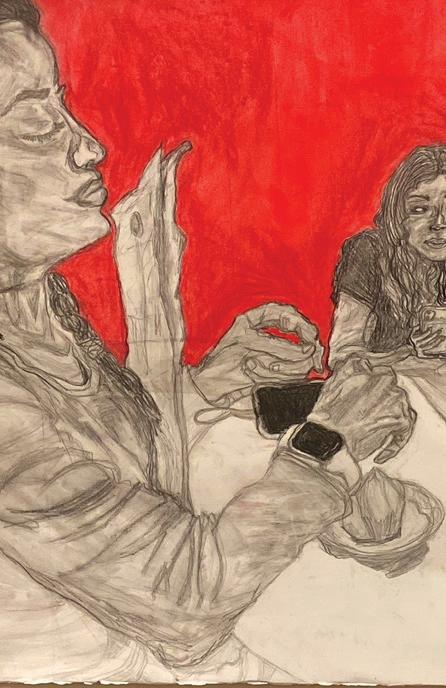
Gentrification
as a Skin Graft: An Ethical Failure Masquerading as a Cure
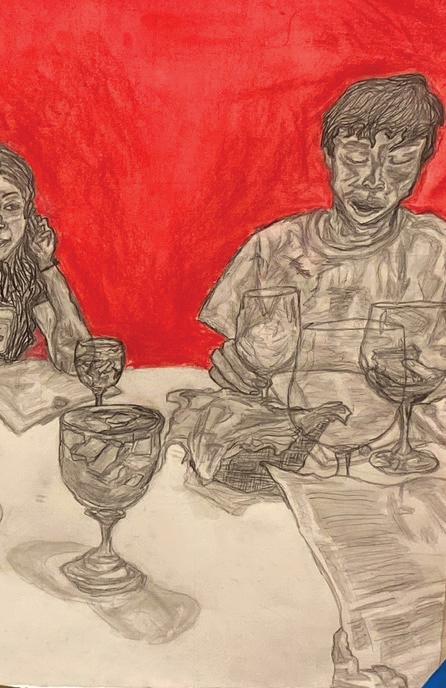
Christopher Smith
Ed. Telvia Perez, Joseph Said Kwaik
In my hometown of Fayetteville, West Virginia, after organizations started incentivizing migration to the New River Gorge by providing direct payouts to remote workers, property values have increased, new businesses have been thriving, and to new residents, the town has been “beautified.” The well-off out-of-staters that have relocated to my town have, on the whole, succeeded in their goal of improving its economic base—they fix up old buildings, construct new housing units, and create jobs for locals. They have integrated into the flesh of our community, much like a graft meant to repair damage to the skin. However, this graft does not repair. Instead, it corrupts the healthy, although damaged, skin. The people affected by this grafting are not cured of their afflictions; rather, they are displaced, alienated, and plunged further into economic despair. In order to increase the capabilities and well-being of local populations, gentrification must be disincentivized.
What are capabilities, and how do they relate to gentrification?
Martha Nussbaum, an ethical philosopher, measures human well-being and quality of life using the “capabilities approach,” focusing on
people’s capabilities of life, bodily health and integrity, emotions, affiliation, practical reason, play, and control over one’s environment. These capabilities are core aspects of quality of life; they give people more agency and freedom in their daily lives rather than worry and limitation. Although people living in communities going through gentrification still have many of these capabilities, the capabilities that they retain are extremely limited. Control over one’s environment is the most limited during gentrification; wealthier people come to an impoverished area and revitalize the community: there are more businesses, more income in the town, and property values rise. Despite these seemingly positive aspects of gentrification, the locals have been stripped of their control of their environment. Rent prices go up, making it extremely difficult for renters to make ends meet without moving to another town with a lower cost of living. In Fayetteville’s case, buildings that were publicly owned have been privatized, transferring the power of preserving the physical constitution, integrity, and legacy of these historical buildings over to people

who have no sentimental connections to them. Rather than the public deciding what to do with their buildings, the control of the environment is handed over to outsiders trying to graft themselves into the locals’ environment.
Play, or the capability of enjoyment, is also extremely limited during gentrification. Consider the millennial burger joint: a common trope of gentrification that has become popularized in meme culture today. “Handhelds” are all $15, fries are an upcharge, and craft beer flows like a river. When gentrification comes, prices rise, and fun activities that bring pleasure are commodified to the point where they become unattainable for the average local in a gentrified area. I
felt this shift in Fayetteville first hand. My first job, a dishwashing position at a local breakfast spot, came just after my area became a hotspot for out-of-staters to move into. Although the cooks were nice and fed me for free, it would have taken me two to three hours of work to afford a baseline menu item. A full day’s work would be needed if I wanted to go on a date. A unique example of the lack of recreation, or play, for locals of West Virginia comes in the form of “Ascend WV,” a program founded by Brad Smith, a near billionaire, and supported by the West Virginia State Government. Ascend pays outof-state remote workers $12,000 cash, provides them with free outdoor recreation equipment, and creates co-working spaces
for remote workers from other states to come to areas in West Virginia, including my own. While these out-of-staters are rewarded for living in my area and enjoying our natural wonders for free, locals must pay more to live where they are from due to rising property values and pay exorbitant amounts for recreational activities. The inability to control their environment or have any time for play makes life dreary for locals; their entire lives revolve around making rent payments and putting food on the table, while the graft of gentrification enjoys natural beauty and nights out without the pressures of staying afloat.
Another capability that is infringed upon during gentrification is affiliation. Before gentrification begins, there is a strong sense of community despite shared economic hardship. Although bred by adversity, this sense fosters comfortability and expression within the community. When the graft of gentrification begins and prices begin to rise, people within the community are often forced out, seeking accommodation in neighboring areas. Even though locals may have a good life, even a better life, elsewhere, there is still the issue that
they were displaced from the community they called their own. In my neighborhood, I have seen local businesses close, most houses on my street be turned into Airbnbs, and friends move away from home due to the high cost of living. These people and institutions that were once affiliated and integrated within the community have dispersed due to the grafting of out-of-staters onto the skin of our town.
Why is gentrification bad in this sense?
It is true that homeowners have greatly benefited from the appreciation of their assets. It is also true that many people living in gentrified areas have been given even better lives by moving there—the towns they inhabit are undeniably prettier, more developed, and bustling. The capabilities of the gentrifying population are increased and protected, making life better for them. On paper, GDP goes up, and poverty goes down. It can be argued that, under a utilitarian sense of good, the positives of gentrification indeed outweigh the negatives. However, a decrease in poverty within the city limits does not correlate to the uplifting of the impoverished—they have
instead been removed from the equation and have been displaced. The town may look prettier, the infrastructure may be sturdier, and the population may be richer, but it is not a cure to the throes of poverty. Although gentrification seems to heal the community, it simply disperses the people affected with no real solution for how to make life better for them. So many people from my town have moved out; small business owners have been displaced by those with more capital, rent prices have driven out people who were once staples of my daily walks around town to surrounding areas, and most homeowners on my block have turned their old houses into Airbnbs and moved elsewhere. Even though many of these people have found better opportunities elsewhere, they have lost the sense of community that they had grown up feeling. Although they may be economically better off, money cannot buy the feeling they once had in a community of people they grew up with.
How does gentrification reduce human value?
Gentrification prioritizes property values and beautification over the well-
being of residents. In the Estranged Labor section of his Economic and Philosophical Landscapes, Karl Marx writes, “The devaluation of the world of men is in direct proportion to the increasing value of the world of things.” Although gentrification, at first glance, seems like a way to a better life for those within a community, the main point of gentrification is not to improve the wellbeing of current residents but to increase the value of property and cash flow within a previously undervalued area. As profit incentives and beautification become more present within a community, there is a devaluation of the working-class people that inhabit it. To the gentrifiers, maximizing rental income often takes precedence over addressing the housing needs of long-term, lower-income locals. Although profit-driven ventures increase the monetary value of property, they also deface the historical and cultural significance of places once adored by the community. Unlike a fish skin graft, which may look unappealing but actually heals the affected skin, gentrification cuts off all the affected skin of the community and replaces it with another community’s skin that is not cohesive. Rather
than heal the community by giving a lifeline to the disenfranchised, the process of gentrification throws human value to the side, prioritizing outward appearance instead of community.
In his later work, The German Ideology, Marx also says, “For the proletarians … the condition of their existence, labor, and with it all the conditions of existence governing modern society, have become something accidental, something over which they, as separate individuals, have no control.” Agency is an important aspect of human value and capability, but when the grafting of the upper class onto communities starts, the only agency that matters is that of the rich. Only the gentrifiers can truly decide what they want to achieve, and workingclass people must make do— they have almost no agency as to where they want to live, how they want to spend their free time, and how they want to spend money because of the rising cost of living under gentrification. Despite locals being poor, they had much more control over their lives before gentrification began. After the graft began, material conditions being bettered for the wealthy transplants have
limited the control over life that the locals had.
Should society intervene to stop this grafting?
Depending upon your worldview, this process of grafting can be either good or bad. If you believe that a capitalist and individualist morality is preferable, you may be more inclined to think that economic freedom outweighs the well-being of others. If you believe in a more communalist morality, then you are probably inclined to believe that quality of life outweighs economic freedom. Despite these differences, anyone with any set of morals can see that gentrification devalues humanity in favor of the economy. Although the United States is an especially individualist nation, much of our legal precedent and morality comes from J.S. Mill’s “harm principle.” In On Liberty, Mill supports extensive individual liberty, with the caveat that any encroachment upon someone else’s liberty should be punished. , He writes, “Acts injurious to others require a totally different treatment. Encroachment on their rights … unfair or ungenerous use of advantages over [others] …—these are fit

objects of moral reprobation.” Consider where your rights end. A racist has every legal right to believe what they want, but do they have the right to physically harm a minority for no reason? Do landlords have the right to evict tenants at will if the tenant pays on time? Is raising housing prices and the cost of living generous? Is a historical town property being auctioned to the highest bidder, without the general consent of the population, generous? Is the economically forced displacement of working-class people from their homes not injurious? The answer is no— the rights these parties possess end when they encroach upon the rights of others. This is the harm principle in action. By following Mill’s harm principle, it is evident that, at the very least, gentrification is indeed a
fit object of moral reprobation. In a society that considers things like petty larceny fit for moral reprobation, should we not consider the theft of livelihood and community in the same way?
How should society intervene?
Mill says, “[S]ociety, as the protector of all its members, must retaliate against [the offender].” Under this very principle, it is obvious that society must intervene. Before we discuss interventions for addressing the harm that gentrifiers, or the “grafting class,” enact on locals, it is essential to note that the members of “the grafting class” are not dehumanized simply because of their privilege or the harm they have caused. All humans
are worthy of capability and agency and should not be seen as lesser. However, it should be noted that slightly limiting capabilities for those who are privileged is not out of the question as an interventional measure. Consider Nussbaum’s capability to control one’s environment: does the grafting class not already have such a capability? Despite the higher cost of living within cities and suburbs, the newly incoming wealthy people have a relatively high capability of control to meet these prices compared to a working-class individual who may have less financial power. With an already increased level of capability, must the grafting class take more from those whose capabilities are limited? Even if economic freedom takes precedence, what of the economic freedom of those affected by gentrification? In order to preserve the capabilities of the working class, the capabilities of the grafting class must be limited but not taken away. Instead of incentivizing already privileged people to gentrify by way of cash payouts, low property value, and vacant land, there must be a disincentive. For example, instead of paying people to move into lowincome areas, perhaps require
that the grafting class pay more taxes to move into such places. This way, instead of money going into the pockets of the already privileged, it will go toward social programs for the poor and contribute to the betterment of infrastructure that will not directly raise the cost of living. The grafting class, in this sense, still has the capability of control, but to a lesser extent, as not to harm those of a lower economic class.


The Transparent Connection: An Existentialist View of Identity
Ryan Marienthal
Ed. Jayin Simh, Telvia Perez
Since the early 1960s Bob Dylan has felt misunderstood by his fans, who have wanted nothing more than for him to share their grand revolutionary spirit and be the genius songwriter speaking the soul of their generation into music. However, this is nearly the opposite of who he feels he is. His fans began to resent his rejection of this identity, which has evolved into a conflict that continues to this day. In a 2004 interview aired on 60 minutes, Dylan shares, “It was like being in an Edgar Allan Poe story, you know you’re just not that person everybody thinks you are, although they call you that all the time. You’re the prophet, you’re the savior. I never wanted to be a prophet or savior, Elvis maybe … .” Those that believed in this abstract identity they had formed of Dylan as a prophet and savior were doomed to be disappointed by the reality of who he is, and Dylan himself had to bear the weight of being misunderstood. An abstract identity is harmful to believe in because it denies the truth of who one is (i.e. their emotional or physical predispositions), and does not describe the physical expression of itself through actions and feelings. It would not have been possible for Dylan to avoid letting his fans down because the abstract identity of ‘prophet’ was at odds with how he felt, and thus is un-
able to be expressed in a manner that would be satisfying for his fans. This discontinuity between an abstract identity and one’s true self is not only found when we interpret others, as with fans interpreting celebrities, but also when trying to understand ourselves.
In the same way that we may find the reality of a celebrity dissatisfying, we may find the experience of being our true self dissatisfying. Attempting to overcome this insecurity by grafting an abstract identity over our true self—one that is usually idealized and free from things like discontentment, failure, or meaninglessness—will result in a disconnection with the identity that we desire and feelings such as self-hatred and purposelessness. The connection between desiring an abstract identity and these struggles, such as self-hatred, are described in Søren Kierkegaard’s Sickness unto Death, specifically the concept of “willing to be oneself”.
Kirkegaard’s Sickness unto Death asserts that our desire to embody an abstract identity results in an inevitable discontinuity between who we are and who we desire to be. In order to overcome this discontinuity, the identity must encompass the unchangeable parts of our self and be expressible in our actions.
In Sickness unto Death,
Kierkegaard describes the ‘self’ as “a relation that relates itself to itself”, or in other words, a force that continuously reflects on how connected our ‘self’/ identity is with the expression of that identity in the world (our embodied self). Our embodied self must either identify entirely with the ‘self’, or have complete dissonance with it (which Kierkegaard refers to as Despair). Despair for Kierkegaard is “the expression for the inability of the self to arrive at or be in equilibrium, and rest by itself”. It is an internal conflict that arises when our ‘self’ is not synonymous with who we feel we are. The section of Sickness unto Death “Will to be Oneself: Defiance” examines how the desire to be oneself originates, and the conflict that arises from it.
In seeking to cover up an insecurity, such as a dissatisfaction with how we feel, we seek to identify with a sort of “infinite self … the most abstract possibility of the self” in order to alleviate the pain of that insecurity. When we desire, or ‘will to be’, this abstract identity or ‘self’, we necessarily reject any possible connection we could have to it. To illustrate this, picture someone who desires to be a great piano player, who instead of admitting that they are unskilled, remains in
a cognitively dissonant state of desire, separated forever from embodying this identity. Even if they continue to practice and become great at piano, they will never embody the abstract identity of ‘being a great pianist’. The abstract identity we ‘will to be’ is fundamentally impossible to connect with because it does not encompass what it means for us to realistically embody it. According to Kierkegaard, one of the main elements missing from this identity is an understanding of our embodied self’s limitations, our “natural capacities, predispositions, etc…”. An imaginary ideal form of ourselves does not take into account these limitations; therefore, we can never embody it. One who is armless surely cannot ignore this fact in their pursuit of playing the piano; one who is too depressed to focus may be unable to sustain practice. Beyond physical limitation, this abstract identity ignores the context of our lives that the desire takes place in. Our present self is inseparable from the past that has created it; we may find ourselves wanting to “begin a little earlier … not at and with the beginning, but ‘in the beginning’”. Kierkegard is showing that we often desire a different past. To not accept our current state as the ‘beginning’ because our ideal identity
demands that we should have begun ‘in the beginning’, much earlier in life, leads to a harmful retrospection where we resent our life up to this point. The abstract self that has been created in imagination does not allow us to have lived imperfectly before desiring it. This is a common wish, one who has just begun to play the piano at middle age wishes they had been practicing since they were an infant. By ignoring this physical necessity, the limitations of our physical capabilities and our past, and still desiring an abstract identity despite its impossibility of being embodied, we begin the path to endless existential dread.
By continuing to pursue an abstract identity, the connection to our insecurity and ‘will to be oneself’ supersedes the possibility of realistically embodying that identity because instead of overcoming the discontinuity between our embodied self and the desired identity, we begin to view ourselves as “the wronged victim of the whole world and all of life” . In doing so, we justify our insecurity and allow it to become the only way we relate to this identity. When we view ourselves as this victim, we perpetuate our discontinuity because we absolve ourselves of
the responsibility to overcome it. Overcoming this insecurity would mean losing the only part of our identity we can connect with, which is the inability to become it. This is the state of Despair we are in when we ‘will to be’ our ‘self’.
Because we are in Despair, consumed by a negative connection to our identity, we must find some way to feel comfort. Kierkegaard identifies a sense of truth as this sort of antidote to insecurity. This sense of truth causes us to view our inability to connect with our ‘self’ as a fundamental truth about ourselves. By “Rebelling against all existence, [we] feel that [we] have obtained evidence … against goodness.” . Not only do we rebel against our insecurity, we make it a fact of our universal condition. This brings us comfort, believing that we have not failed at something, that ‘goodness’ itself was never possible for us; that we were failed by the universe and not by our own shortcomings. This deluded sense of truth becomes our only way to cope with this existential identity crisis; instead of confronting our insecurity, we view our entire existence as having been poorly constructed. Because of the depth of pain that is caused by being in Despair, we are forced to

cope by believing that there is no possibility of good for us. This pain manifests as resentment of ourselves for being fundamentally flawed; “it is as if an error has slipped into an author’s writing and the error becomes conscious of itself as error”. Kierkegaard is showing that this disconnection with identity is an existential condition, one where we view ourselves as having been failed by being constituted incorrectly, possibly by an author. As with an error in an author’s writing, our entire self feels as if it were insignificant enough to not be edited and corrected, doomed to eternally be a stain on a page, an isolating and miserable state of being.
The only way to overcome our discontinuity with identity is by changing the way we interact with it. Kierkegaard says our
self can overcome Despair, writing that “in relating itself to itself and willing to be itself, the self rests transparently in the power that established it”. How we embody an identity once it rests transparently within us, or how this is achievable, is not described well within Sickness unto Death. Kierkegaard’s other works that further explain Despair are uninformative of our interaction with identity because they deal solely with a religious embodied experience. In applying this interaction with the ‘self’ to our interaction with identity, the force that ‘establishes’ an identity is the imagination of our embodied self. In order for our identity to be ‘transparently’ embodied in us, it must be part of everything we do. There is no break from ourselves. We are not only affirmed as a great piano player when performing,
but in every breath we take, every conversation we have, every sting of guilt we have when not practicing, or even the great joy we take in rest. Every single moment we live must be encompassed into our artistic plan. A transparent connection to identity is the task for an artist, as we must actively design every facet of our life to reflect an identity. Focusing on this type of design removes the danger of connecting with an abstract identity. The Gay Science by Friedrich Nietzsche deals explicitly with the construction and embodiment of identity from an artistic, secular lens and can further help us understand what it means to de-abstract and physically express an identity.
In order to productively cope with our insecurity, we must first reframe what our identity demands in order to be embodied. In desiring to become a great piano player, we must accept that embodying this means beginning at a seemingly insurmountable distance from our abstract conception; we must begin with no skill, making it seem like we have lost any connection to that identity. However, by accepting this starting point and viewing our lack of skill as part of being a great pianist, our identity has already been affirmed and
rested transparently within us. To successfully reframe an identity, we must design for ourselves a compelling life, a synthesis that encapsulates our physical necessity, while still remaining true to the idealistic romanticization of the abstract identity we desired and found so compelling to begin with. The aphorism “One Thing is Needful” in the Gay Science describes a different reaction to the embodied limitations that are rejected when we desire an abstract identity, “to ‘give style’ to one’s character—a great and rare art! It is practiced by those who survey all the strengths and weaknesses of their nature and then fit them into an artistic plan until every one of them appears as art and reason and even weaknesses delight the eye.” Instead of rejecting our past and our
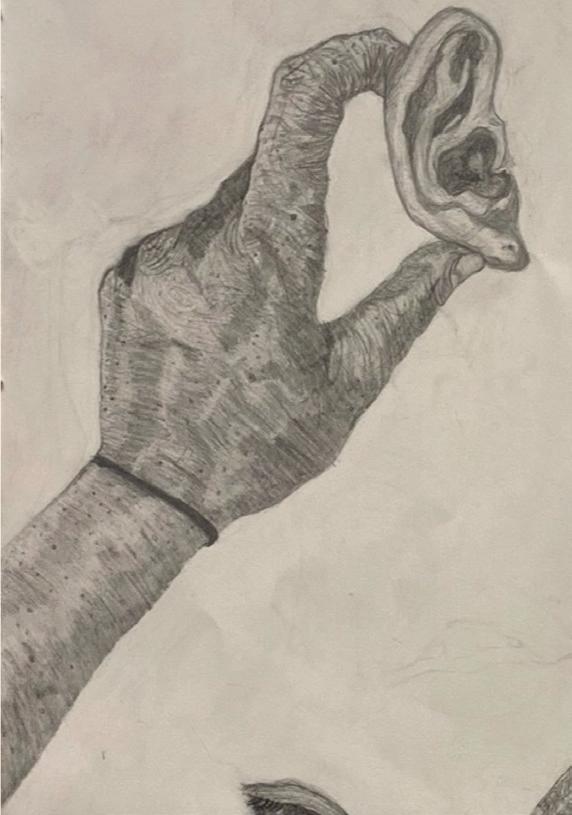
physical capability, Nietzsche suggests that we make them an intrinsic part of embodying an identity. If we resent our natural dispositions, such as strengths and weaknesses, and do not learn to accept and encompass them in terms of our embodied identity, then we will remain in Despair. Having accomplished this design, we must then rigidly follow what that identity entails in order for it to rest transparently within us.
By resting transparently in us, our identity necessitates a restriction of how we act. It is not being free of constraint that allows us to accomplish this, it is “constraint and perfection under a law of [our] own … it is the weak characters without power over themselves that hate the constraint of style.” Nietzsche asserts in this passage that the embodiment of an identity or a ‘style’ transparently must be viewed as a restriction. We must understand every element of ourselves in terms of how they relate to identity, and never allow something we do deviate from this understanding. This is not an easy task, but accomplishing this results in a soul at rest, free of Despair and self-resentment.
As we survey what we want to be in life, whether it be a genius,
hippie, philosopher, good person, or great pianist, we must begin by figuring out how these identities are embodied. If we do not understand the harm in trying to artificially connect with abstract identities, then we will forever be resentful of our inability to become them. By designing an identity that rests transparently within us, we can gain endless joy by affirming who we are in every action we take because it has been understood as part of the grand design of our identity. This constant affirmation of ourselves is the true positive value of a connection with an identity, and why it is important to rid ourselves of Despair.
Make Again: Arie l Va rgas
The Fiction of Renewal
Ed. Iris Wu, Annie Lind

Donald Trump wants to Make America Beautiful Again. Make. Again. One of the ways that Trump envisions this making is through embracing neoclassical architecture, as outlined in the executive order on “Promoting Beautiful Civic Architecture.” It echoes a previous executive order from the 2016 term, which decries modernist styles like brutalism and deconstructivism. The neoclassical is portrayed as a traditional American style, promoted during this country’s foundation, and one that will remind Americans of the aesthetic and political ideals of the past. This project is part of a lineage of classical revivals, which ranges from the Napoleonic Republic to Mussolini’s Italy. Beyond the adoption of a style, MAGA is engaging in a making of a landscape, a project of visual creation.
Similarly to instances in the past, MAGA advocates visual creation as a means of redemption or renewal. Theophilus Presbyter and Cennino Cennini, two of the earliest writers on art, theorized that art is an imitation, or reproduction, of nature. To them, art was humanity’s passage to redemption, a way to continue the act of creation started by the Abrahamic god.
Promoting “Beautiful Civic Architecture” seeks to evoke the American past within habitable space, a vision that echoes Leon Batista Alberti’s assertion that art “lets the absent be present ... it shows to the living, after long centuries, the dead.” Instead of the contents of the natural landscape being reproduced, MAGA wants to reproduce—renew—a political landscape. MAGA seeks not to renew humanity from before the Fall, but to renew America from its twenty-first century state, ambiguous as that may be.
If entertaining the idea that renewal of the past is feasible, specifically through the shaping of a landscape, one must interrogate whether reproduction is genuinely possible. One must question whether visual creation can really allow “the absent to be present.” Even if the closest imitation of an object is achievable, as Walter Benjamin argues in The Work of Arsomt in the Age of Mechanical Reproduction, there will always be aspects of the original object’s unique temporal being that will be impossible to reproduce. The object’s exact chemical wear or historical context cannot be incorporated. Trump’s columns will never exist as those of the Jefferson memorial
do, or the Antebellum south, or the Parthenon, precisely because they do not have the same temporal experience. The authenticity of an object, or lack thereof, is always manifest.
When undertaking the project of reproduction, the artist is fated to graft the self onto the representation, effectively rendering the object distinct. Art can never be abstracted from its maker, and likewise, the reverse applies. Just as Heidegger argues, the act of creation is inherently reflexive. The art creates the artist, and the artist creates the art. Representation is inevitably personal. One cannot represent without impressing their being onto the object. Therefore reproduction—the act of mimetically representing a subject—is actually a creation of an original object or concept.
Physician Giovanni Morelli,
who developed a method of artistic identification, argued that even the most skilled imitators will insert almost unnoticeable “shorthand” gestures. The individuality of the maker lends to an inevitable indexicality. These gestures attest to the inevitable subjectivity of representation, of imitation. This is to say that MAGA’s “traditional American landscape” will never be divorced from the twentyfirst century. Written into the classical columns will be a projection of MAGA itself, a movement of the circumstances and climate of our time.
We project our identities not just in the objects we create, but in those we behold. Our reception of objects—what we associate them with, and what we perceive them to be—is dictated by our subjective experiences.

This extends to the way we view the metopes and triglyphs of classical-style structures, ancient and new. This instability of signification, as dictated by structuralist theory, is a seminal ethos of contemporary art. Pioneered by Ferdinand de Saussure, this theory argues that signs are implicitly arbitrary, in the sense that they do not carry any inherent meaning but rather derive meaning from their surrounding context. In respect to art, when situated in different places in time, the authentic and the copy will be made, and received, with differing associations and significations.
The Trump administration states that traditional architecture will remind citizens of American ideals. However, the supposed “ideals” of neoclassicism are anything but transhistorical. This meaning of neoclassicism is vastly different from its beginnings. Whereas MAGA is a movement grounded in American exceptionalism, in 18th century America the neoclassical had the connotation of anything but. Imitation was considered a moral ideal, and made possible by the adoption of European visual culture, including the prevailing neoclassical style. Neoclassicism was a means for America to “catch up to”
Europe, particularly the tastes of the Napoleonic regime. If the neoclassical is somehow supposed to celebrate the unique patrimony of American government, at the time of the Founding it expressed an emphatic unAmericaness. The intention of the neoclassical has changed and thus the ornament of the made again American landscape can, by no means whatsoever, facilitate an ideological renewal. MAGA’s mere idea of making again is revisionist: this is no return.
If “reproduced” objects cannot conceivably embody the past, how could the reproduction of an era, a renewal, ever be possible? Even a hyperreal “capture” of a moment is just a skewed reality. We may observe this through the medium of photography. Susan Sontag in On Photography discusses the commonplace usage, and underlying nature, of the photograph. Though photographs are used to mimetically portray events, such as through photojournalism, their faithfulness to reality is ultimately still vulnerable to their frames of reference. The photograph allows us to take snapshots of reality in which we can arbitrarily omit or insert truths. This is to say that the past cannot be recreated
in the present—it cannot be captured in its entirety and carried transhistorically. To buy into mimetic reproduction is to disregard the inherent insertion of the self, our intrinsic production of fiction.
The project of “Promoting Beautiful Civic Architecture,” one that will promote a renewal of an ideological and aesthetic landscape, is rooted in a fiction akin to the photograph. This fiction perpetuates the idea that a return through visual “capture” is being facilitated. In a similar vein, the idea of renewal through reproduction, where a time can be returned to, is the MAGA ethos. Not only is it exemplified by the movement’s very name, but in Trump’s talking points of making America “safe again” and “bringing back American jobs.” The president speaks nostalgically of a time to be brought back, but when this was, what it was, and who was safe, remains unclear. Further unclear is the veracity of Trump’s portrayal of the present, of what it is like now, or who is safe, or who is employed. Trump’s America, just like Trump’s neoclassical buildings, does not incorporate past nor present, but a fictional revision of both.
To make again is fiction, and
the paradigm of our age. Walter Benjamin warns of an increased ambivalence to, or perhaps even dismissal of, the fiction of reproducibility. Speaking during the time of the invention of photography, he warns that the authentic is increasingly disregarded due to evolving modes of production. He recalls a time when reality was not so evasive, when reproductions were achieved through artisanship, rather than industrially produced. Though the essence of authenticity cannot be compromised, its appreciation can, and technical production approximates original and copy convincingly. As a result of advances in production, technical representations of reality can be produced “faster than one can speak,” and thus the authentic is rendered unprecedentedly vulnerable. The public is

subjected to an onslaught of reproductions not easily authenticated, and an increased normalization of fabrication has arisen.
Today the dismissal of authenticity has exceeded what even Benjamin could imagine, and this dismissal constitutes the MAGA platform. In this age, anyone can whip out their phone and record, reproducing their lives on a tiny screen for the consumption of the viewer. Likewise, we can ask AI to fabricate images of a mimetic quality beyond human capability. We engage in a quotidian framing of reference, such that the realities of our being become fictionalized. People on Instagram turn out to be fake; gory photographs of violence are published in major newspapers, only to be debunked as AI-produced; comments on TikTok are filled with bots. On the other hand, LAPD officers are acquitted in the court of law of using “excessive force” on a Black man (Rodney King), despite video evidence of him being beaten to a pulp. The fabricated is considered documentation, and documentation is considered fabricated. In moments where justice is needed, where a notion of legitimate and authentic testimony is exigent,
documentation is instead denied.
MAGA’s platform was established within, and by the means of, this theatre of artifice. Misinformation, a re-production of reality in itself, has without reasonable objection placed Trump into office. The demonization of his opponents under Pizzagate and the questioning of the 2020 election results are just two examples. Pressing issues are further omitted from the frame of reference: climate change is denied, and vaccination is denounced as unnecessary. In recent years, fact checking has become a feature of social media, and entirely new social platforms were established to operate without authentication. Fake news, Truth Social; a mass movement of making again has been founded on denial, and has put itself into power.
In grafting the contemporary with the classical, a return is impossible. MAGA seeks to shape the American landscape, to renew it by filling it with ionic spirals, pediments, and grandiose metopes. In this retrospective space, we will live in a factitious past, for pressing realities await. For all of its denial, MAGA will never be able to abstract the
circumstances and climate of its being from the space it wants to create. This landscape will always be a made again landscape, and thus a twentyfirst century fiction—a grafting of past onto present to produce something entirely different.

Perfectly Powerless: The Paradox of Girlboss
Ed. Imme Koolenbrander
Feminism
Brittany Deng
The word “girlboss” connotes an idealized yet conflicted portrayal of womanhood. In mainstream culture, girlboss feminism worships wealthy, attractive women who exude confidence to men’s despair, while their simultaneous submission to the male gaze makes them worthy of attention. Picture famous singer Sabrina Carpenter: with blond tresses, blue eyes, and miniature outfits, she embodies a mix of sensuality and eroticism. She made waves on social media for her performance choices, such as her bejeweled lingerie and thinly-disguised sexual innuendos—“Have you tried this one?” To many, she is an exemplary girlboss: rich, successful, pretty, thin, representing the sexually liberated woman. However, when Carpenter falls short of her audience’s standards, their exaltation transforms into betrayed repulsion. If her outfit is lackluster or her body looks different, she receives backlash such as fat-shaming (online searches including “Sabrina Carpenter weird stomach”) for violating the audience’s beauty standards—as if one more inch of body fat makes her less girlboss. Her humanity disappoints the crowd’s desire for perfection, revealing the audience’s sense of entitlement
to her attractiveness. Girlboss feminism thus reveals itself not as empowerment but a form of regulation.
To be girlboss is to look perpetually flawless while executing the capitalist grind— imposing upon women an excess workload kept hidden. In her song Busy Woman, Sabrina Carpenter captures the girlboss intersection of capitalism and beauty: “So much to shave and lipstick to reapply/ Maybe for you, though, I could accommodate.” She references the effort women must dedicate to being flawless while projecting effortlessness to their male counterparts. Influencer culture (“Things that Make You Look Cheap in Public!” or “Dark vs. Light Feminine Energy!”) claims to emphasize women’s agency to determine who they are while ultimately revealing society’s obsession with how women present themselves. A simple scroll on social media platforms leaves women with new knowledge on how they can be more perfect, from improving the visual appeal of their lifestyle to their physical desirability. Even career-inspiring content is often collections of cinematic Pinterest photos, bringing into question whether they glorify the careers themselves or their
aesthetic potential. Compared to a relative absence of male influencers, the plethora of female influencers who sell beauty and conformity to the masses makes clear that ingrained within the socialization of girls is the expectation for perfection.
We might locate the contradictory nature of girlboss feminism in French philosopher Michel Foucault’s idea of power. In his book The History of Sexuality, he argues that power—the relationships that govern how people and institutions coexist—does not oppress but rather “produces; it produces reality; it produces domains of objects and rituals of truth.” Power emerges through discourse: social interactions that shape individuals’ knowledge and desires. In the case of girlboss feminism, social media is the discursive site that establishes women’s behavior: influencers who promote girlboss feminism inspire others to reproduce such content, maintaining a perpetual cycle.
The most unsettling aspect of power is how unconditional agency is an illusion. For Foucault, resistance—although intuitively the antithesis of power—is “never in a position of exteriority in relation to
power.” Instead, it assumes “the role of adversary, target, support, or handle in power relations.” Girlboss feminism, in its purported opposition to sexism, offers only various aesthetics as the vehicle for this opposition. They share a refusal to defy the feminine constraint of being demure and desirable; they make women fixate upon their bodies and reify the patriarchy’s expectation for female perfection. Thus, girlboss feminism exemplifies how movements of resistance often reaffirm the greater fabric of power itself, claiming to challenge sexism while reinforcing patriarchy.
Whereas we ought to question

why we live in a world in which women’s livelihoods revolve unhealthily around perfection, the “Judgment Myth” silences such dissent. In her book Faux Feminism, American philosopher Serene Khader introduces the Judgment Myth as the problematic belief that it is anti-feminist to criticize women’s choices. The Judgment Myth glorifies individuality and diminishes the individual’s responsibility for how their choices affect others: Writer and civil rights activist Audre Lorde coined the term “selfcare” in 1986 to argue that members of oppressed groups caring for their bodies was “an act of political warfare.”
However, Khader notes how “self-care” under girlboss feminism is “a preemptive strike against anyone who would judge [influencers] for the $100 facial mist it takes to keep up that #cleangirl aesthetic.”
Once a source of solidarity for marginalized identities, the Judgment Myth perverts selfcare as vapid consumerism— fueled, in a Foucauldian twist, by patriarchy-induced insecurities.
By empowering girlboss feminism, the Judgment Myth allows influencer culture to systematically exploit women’s insecurities. While the Judgment
Myth defines feminism as the ability to choose, this abundance of choice is a constraint that implies we must choose or else opt out of womanhood’s modern definition. This emphasis upon women’s capacity to upgrade tells them to consistently desire a more superior version of themselves, implying that women are inherently inadequate. Woman thus becomes a superficial identity steeped in materialism and consumerism. This discourse fuels the patriarchal thirst for female perfection: it ignores how the ideal of female perfection originates from patriarchal desire and capitalizes instead upon how desirability in a man’s world is women’s designated currency.
By sowing division amongst women, The Judgment Myth systematically exploits female labor—the psychological labor of selfdeprecation and the physical labor of underprivileged women, combining to drive consumerism. As influencers introduce beauty products for increasingly fabricated flaws—smoothing out hip dips, removing body hair—young women’s insecurities amass to fuel individual profit. But since the Judgment Myth equates feminism with “boldly defying
the judgment of anyone who would dare stop one from bringing home that paycheck,” capitalism operates beneath a feminist veneer that “makes work within the capitalist system look like it’s part of a struggle for justice.” It further creates cognitive dissonance in these supposed agents of feminism: In their pursuit of agency and perfection, young women parade the glory of womanhood while neglecting the labor conditions in which their products were produced: the exploitation of underprivileged women. This materialist feminism confirms Foucault’s view of resistance as a mere supporting role to power, as it blinds itself to the oppressive workings of capitalism and patriarchy. Girlboss feminism pressures women to achieve an aesthetic of perfection that commodifies female bodies within a perverse capitalist framework; it is a powerless site of resistance that operates on behalf of its oppressor, continuously obscuring our ability to identify its betrayal.
Systems such as patriarchy and capitalism perpetuate themselves through incentivizing obedience. Khader explains that social systems such as patriarchy “work
through material rewards and punishments.” The “good” ones, the conventionally attractive and non-threatening influencers, are rewarded with sponsorships and likes. Thus, influencer culture yields to the misogynistic cruelty of pretty privilege. These young women learn to perform femininity according to male desire, such as being beautiful to attract wealth, because docility reaps rewards. However, influencers are not responsible for patriarchy. After all, Foucault’s argument for the reinforcing nature of resistance understands all agents as passive participants in larger social trends. In fact, influencing is one of the few careers that provide stayat-home mothers and other unseen groups of women the opportunity to control their own income. Thus, we should focus upon why women are subject to such conditions. What are the requirements for being seen, and who is deemed worthy of attention? Based on the influencers and celebrities who receive the most attention, these requirements seem to reflect femininity through a masculine lens. Once we question the constructs that define womanhood, individuals may answer for themselves what it means to be a woman.
TranscendingKithandKin: MichaelMorrisonGroupIdentity
OscarWolfe Ed.YoavRaflin

GADFLY: In your recent interview with Katie Couric, you said that “a tribe is defined as a large group glued together by common ideas. And that’s what culture is…” Do you see tribalism and culture as essentially the same thing, or is there a distinction between the two?
Michael Morris: Tribalism is generally used as an insult. It’s what we point to when we want to label the other faction as irrational. It’s the idea that something about their evolved group psychology is taking over and preventing them from seeing clearly, or from communicating, or from caring about the larger picture. One of the things that I tried to do in my book, Tribal, was to push back on some of the tropes about tribalism and toxic tribalism that have flourished in the punditry—in the op-ed pages in the last decade. I see tribal instincts as the instincts that distinguish humans from other members of the Great Ape family. These are instincts that enable us to live in larger communities, that transcend kith and kin and allow for higher levels of cooperation and continuity and building on the past. A tribe and tribal living means that a rich culture is present. We are not the only
animals with culture. Some of the other brainy mammals, like chimpanzees and dolphins, have the rudiments of culture in that there are shared practices within one community that are not shared in other communities nearby. But it never grows very complex because they’re not as good at culture sharing, because they don’t have these adaptations for culture changing that we evolved and that changed everything about our mode of social life. So for me, “tribalism” is a way of talking about the downside of our tribal psychology that can be used in an overly despairing, fatalistic way and gets in the way of the larger point that our capacity for culture is what got us out of the Stone Age. It’s the most special thing about us.
Do you think learning about how tribal instincts function changes the effect that they have on people? In other words, does learning about our tribal instincts make us less susceptible to them?
It’s a great question. I’m a research psychologist, and in the field of psychology, we tend to go around spotting biases, whether they’re visual illusions or cognitive illusions. Learning about the biases does not make you immune to them,
but it can make you self-aware about the potential for you and other people to fall prey to these biases, and it can help you take preventative measures and remediative measures. It can give you some control over the biases, even though, in the moment, you might not be able to escape having the bias. I started writing this book because I occasionally teach in the psychology department, but I mainly teach in the Graduate School of Business. And what I teach there is how to think about organizations, and how to think about what you as a manager or leader can do to steer an organization in the direction that you want, and that will help the group get what the group needs. The group’s culture is a big part of what makes the organization tick, what motivates people, what guides people. What I wanted to show people is that culture is something that we can actively harness. We can manage the extent to which certain cultural patterns surface in a situation, and we can steer the evolution of culture over a longer time period. So culture is a set of shared perceptions, a set of shared ideas we can influence—whether we’re activists or whether we’re managers or whether we’re mid level employees—we can
do things in a situation to bring a certain cultural frame to the forefront and have it prevail in guiding people’s behavior and guiding people’s thoughts. We can also do things over time more gradually, to shift the way that the culture is changing. Cultures are always changing, sometimes organically, but sometimes with a bit of design. Cultural engineering has a bad name, especially if you’re a humanist, but the things that we value most in the world, like universities, engage in cultural engineering. We try to make people more liberal and more thoughtful and more open minded. We’re trying to change the culture. It’s certainly possible to do that. We shouldn’t be despairing.
I know that some of the background for your book was based on thinking about business leaders like Bloomberg.
Bloomberg is responsible for saving hundreds of millions of lives because of his smoking ban in restaurants. It was the first one in a major city. Surprise, surprise, people liked it. People thought they would hate it, and they liked it. There was enough legitimacy associated with top-down regulation of that behavior, and then it
was a domino. Even Paris, even places where smoking in restaurants was considered to be an inexorable part of the culture, have now gotten rid of smoking in most public places. Lots of waiters aren’t getting lung cancer as a result. I think that’ll be one of Michael Bloomberg’s most remembered accomplishments.
Does that indicate that cultural engineering is most effective when it is a top-down process?
There are many fields that try to study managed change of one kind or another, like deliberate social change. The fundamental thing they all agree on is that most change initiatives fail because there is active resistance by people who are invested in the status quo. Regardless of whether change is coming from below, from an activist group, or whether change is coming from authorities who have power, most change initiatives don’t succeed.
What I argue in the book is that the tribal instincts and the three systems of cultural psychology associated with these three waves of adaptations can help us understand when managed change initiatives work. One model that sometimes works is what we call a grassroots
movement, which is bottom up change. The other model, which is kind of opposite to it, is what Jeffrey Sachs at the Earth Institute called shock therapy. Shock therapy is when authorities with power introduce bold strokes of change like sudden, sweeping shock and awe, kind of change. If they do that in a domain where they also have legitimacy, where they have a mandate, where they have dominion over that part of life, sometimes it’s disruptive. It disrupts people’s values and it disrupts people’s habits, and people break out of long held values and form new values, and then form new routines. That’s something that has worked at the national level. It can work in organizations and corporations of different kinds, but it often triggers blowback, especially when it’s a leader from outside coming into a system. When corporations want change, they often bring in an outsider, because they think, “Okay, this person isn’t as invested,” but those people often come across as tone deaf because they don’t understand what people hold sacred. They come up with things that seem reasonable to them, and then there’s just a massive mutiny— people doing everything they can to drag their feet to undermine the change to point
out errors that the leaders have made. Both of these models can work, usually through a kind of momentum of change, where you have ripple effects of change from one level of culture to another, but they work under different conditions. Bottom-up change works when you have lots of time, because it often takes decades. Same sex marriage is a case that we all know about. Same sex marriage went from unthinkable to most Americans, to being boring within a decade. But it took a decade. When Gavin Newsom started marrying people in San Francisco unilaterally, it was a matter of state law. It triggered a reactive movement in California and a proposition against same sex marriage that ended up delaying California’s progress to same sex marriage compared to other states. So it kind of had to be bottom-up.

LGBT groups, pushing people to come out of the closet, be visible, then Hollywood movies, then TV shows, then states, then corporations, then churches, then finally, the Supreme Court consecrates it as the law of the land. That’s bottom-up change. Top-down change can also work. A lot of Americans are excited about Trump. There are enough people excited about Trump’s vision that people will go along with the disruption and the pain of these attempts at rapid, drastic cuts. But, people will ask, “Why does it have to be so rapid? Why can’t you do it more slowly?” Well, that’s part of how this has to work. There was an example I write about in the book. Sweden used to be a country that drove on the left side of the road, and then they switched to driving on the right side of the road, because that’s what most countries in the continent do, including their neighbors. People in Sweden were like, “Can we do this gradually?” And they’re like, “Nope, we’re gonna change.” So on one Sunday, it changed for the whole country. They had painted new lines on the road that they had covered over with black tape. Then just on one morning, all traffic was stopped and they unveiled the new signs and unveiled the new lines and then everybody had to
change at once, because it’s very interdependent, and that was the only way to make it happen.
You mentioned the three instincts within tribal identity, being the peer, hero, and ancestor. Can you elaborate on that?
People distinguish many granular distinctions in the evolution of tribal identity, as opposed to just three major waves. I’m trying to integrate this field of evolutionary anthropology with the field that I primarily work in, which is cultural psychology, and these three waves more or less correspond to major pieces recognized in both fields and culture. It is an incredibly nebulous phenomenon, and many people regard it as too squishy to ever really say anything meaningful or too mercurial to ever get your hands on. I try to label things in a concrete way if possible, which is labeling these instincts with regard to the reference group that they primarily involve. It’s a familiar idea that our conformist side involves peer groups, that we have groups of people that we regard as similar to us, lateral coworkers, classmates, and neighbors, and we have a system of psychology that that impels us to try to
match and mesh with the people that we see around us. That has many downsides. We often talk about the dangers of conformity, but it’s also the cornerstone of human coordination in groups. It’s why we were able to start hunting as a group instead of each for themselves. It has enabled language, and it enabled collaboration. Then the next major wave, about a half million years ago, is when people started doing pro social things to the community. They would take care of somebody who was handicapped, even though that person wasn’t able to repay the favor directly. Now, why did they do that? It’s not just to be virtuous. They did it because around that time, the psychological material for a system of reputation was in place where people were communicating and they were making moral judgments. People started doing pro social things to gain status, to gain a good reputation, and to gain the tribute that comes to those with a good reputation. That creates a kind of tournament of who can be a hero that not only serves individuals because ambitious individuals get a lot of rewards, but it also serves the group, because it creates a dynamic system where people are trying to trying to anticipate what will be good for most people
in the group, what will be appreciated by the group. That’s a progressive force and cultural evolution, because if there’s some new hunting strategy or some new agricultural strategy that is working lately because of climate change or because of some other reason, the rising generation will imitate that strategy rather than the dominant strategy, and then, as a result, the group moves toward the new strategy that is working. That’s an important contribution on top of the conformist side of our psychology.
Then the final one, which in some ways, seems to a lot of people like the most primitive, but really, it’s the most recent one. It’s the side of our psychology that makes us extremely curious about past generations and gives us a compulsion to continue the ways of past generations. This morning I was on a podcast down in the Lower East Side of a guy who’s a tech entrepreneur and city politics guy, Brad Tusk. I was like, “Why do you have this podcast studio? It’s in a bookstore. Why do you have it in this neighborhood?” And he’s like, “My great grandparents were in the schmatta trade two blocks away. I’ve named my podcast studio after their fabric shop that was two blocks away.”
It’s meaningful to him, on a day to day level, that he comes back to the same neighborhood and named his bookstore/ podcast studio after his great grandparents’ shop. Why do we have that compulsion? It serves as tribal memory, because it keeps alive the wisdom of the past. It keeps alive the techniques, the expertise, even things that we don’t really understand the function of. We do them anyway, because people in the past did it, and that allows the techniques to carry forward. Some techniques are not needed every generation, but it’s still valuable for the community to hang on to them so that they don’t have to reinvent the wheel. Once you have all three of these things in place, what you start getting is cumulative cultural evolution, a kind of snowballing, where every generation knows more than it knew in the previous generation. Without individuals becoming any brainier, they become fitter, they become more able to survive and thrive. That’s the thumbnail sketch of why and how humans became this supremely cultural animal.
In a time of crisis, are there certain aspects of these tribal instincts that become more salient? Are we more likely to look back to tradition,
employing the ancestor instinct, in a time when the common perception is that things are not going well?
For each of these instincts, there are certain conditions that foster that psychology. When people feel like death is in the air, or that their community could somehow be extinguished, that’s when people tend to cling to tradition. It can be dysfunctional, because there are times like when you have a conflict that’s breaking out into a war. That’s the time when you most would want people to be able to take the perspective of the other side and try to figure out how to de-escalate. Once death is in the air, then people become very motivated to act in line with the tradition of their

group, rather than based on any kind of cost benefit analysis of what makes sense at the moment. The fact that we live in a time of polycrisis, for lack of a better word, we can understand why there’s this reversion to tradition, this kind of conservative shift.
In the experience of the most recent election, it seemed like there was a genuine shifting of identities. How conscious do we need to be for our tribal identity to shift?
I don’t think that it always happens in a really selfconscious way. There are many ways of thinking about multiculturalist policy and multiculturalism as a social science paradigm. I lean towards the one that goes under the heading of polyculturalism or interculturalism, which is basically the idea that cultures are important forces affecting individuals, but individuals cross-pollinate by going across cultures. Individuals have a plural and partial relationship to the cultures around them— nobody knows all of their culture or internalizes all. Psychologists used to think that the individual has some sort of downloaded copy of their culture. But one Spanish person may know Spanish dance,
another may know Spanish cuisine, another may know literature, but nobody knows it all. But that person may also be a fan of Reggae and sushi. So we all span multiple cultures and we are all the inheritors of multiple cultures.
Do we need to be conscious of these shifts for them to occur?
Classical multiculturalism often takes the form, in a somewhat preservationist, way of saying, “The multiple cultures in our society or in our organization are all valuable, so we have to preserve them.” The idea then is that there is the Hispanic community and when we meet a member of the Hispanic community, we should recognize them as a member of the Hispanic community, and they should do everything they can to keep their traditions alive. It’s slightly inhibiting the natural tendency of people to engage in multiple cultures that they live around, and slightly inhibiting the cultural evolution that normally happens. The most vibrant cultures are not the ones in museums, they’re the newly emerging syncretic forms, that’s why it’s fun to go downtown and see the latest music, the latest kinds of art. Some strains of multiculturalism that are common on the left,
can sometimes fail to recognize that culture is really dynamic, and so the Hispanic vote is really telling that the great increase in support to Trump wasn’t from white males, which everybody was really quick to conclude. It came from other communities, and it was striking how Hispanic males, how much they shifted towards Trump. Why is that? Well, a Hispanic male is not just Hispanic. They are also male, they are probably Catholic, they may be blue collar, non college educated, they may be someone who lives near the border and feel sensitive about. There are many identities that people have and we shouldn’t put people in boxes and think that a demographic census category that makes sense from outside is the way that they experience life. A lot of studies have found that less than half of the people in the United States with a Hispanic last name think of themselves as Hispanic. It’s a label that we’re very confident in applying from outside, but not necessarily a label that encompasses people’s identities from inside. I think that we have to be careful about our assumptions about identity politics and taking for granted that this message is gonna resonate with this entire demographic.
Fl uidDivin e B odies onSyncr e t i s m , Be
n j a min Sommer
andGod’s B
Co p r oduction,
odies
Yoav R afalin
Ed. O s c a r Wolfe

GADFLY: In your book, The Bodies of God and the World of Ancient Israel, you argue that the religion of ancient Israel contained competing models of divine physical embodiment. Can you describe how these models understand God differently?
Benjamin Sommer: Before we jump into that, it’s important to realize that contrary to what everybody learns in Sunday school or Hebrew school, the Hebrew Bible (called the Tanakh by Jews and the Old Testament by Christians) doesn’t actually deny the physicality of God. It’s a given in Judaism, Christianity, and Islam as they’ve developed over the ages that God doesn’t have a body. But in the oldest type of Judaism—the Judaism of the biblical text—that’s not the case.
The Bible never denies that God has a body. What the Bible spends time doing is wondering about the radical ways that God’s body or bodies differ from a human body. I think the more dominant position in the Bible is that God has a body, but it’s somehow very different from a human body, perhaps because it’s made of something more like energy than flesh, and because its ability to expand and contract is very different than a
human body.
But there are some biblical texts that seem to think that God has multiple bodies, that God can be present in particular places and times in more than one place at more than one time. That’s not the same as saying that God is everywhere. Rather, God might be sitting on a throne in heaven in one heavenly body, even as God is visiting the earth and speaking to Abraham and Sarah in Genesis in another body. Furthermore, many biblical texts describe how God can come to be present in a particular tree or stone pillar, and it appears that God could be present in more than one pillar at the same time.
I call this the “fluidity idea”— the idea that God’s body differs from a human body because God can be present in multiple bodies at once. God is fluid and can come into and go out of more than one body at a time.
This model isn’t unique to ancient Israel. It’s also found in Babylonian, Assyrian, and Canaanite religion, where a deity can be brought into a particular pillar, tree, or statue. But again, there’s more than one such statue. The god Marduk might be present in the statue of Marduk in Babylon, in the central temple of Babylon, but
across the street there’s another temple that is the temple of Marduk’s son, Nabu, and there’s also a Marduk statue there. Marduk is present in two different statues not far from each other at the same time, and probably in many other statues in other temples in Babylonia and Assyria.
I’d add that the Greeks, both classical and archaic, seem to have a contrasting idea that a deity has one body. That deity’s body can change radically in all sorts of ways, but I don’t know of any evidence in Greek literature suggesting that Zeus could have two bodies. Zeus’s body could change a whole lot, but it’s not the case that Zeus could have one body in one location and another body somewhere else altogether.
So both biblical models (fluidity and non-fluidity) are found in polytheistic religions of the ancient Near East and the Mediterranean world, but in biblical Israel, we get both models showing up simultaneously in different books or in the work of different scribal schools and authors.
If the fluidity model was prevalent in ancient Israel, what factors pushed the Priestly and Deuteronomic
scribal schools of the Pentateuch towards the nonfluidity model?
First of all, I’m not 100% positive that the Israelites began with the fluidity model and that the antifluidity model came later. That’s probably the case, just because the fluidity model is what the surrounding environment held, but we just don’t know enough about the very beginning phases of Israelite religious belief. If you want to go back to the beginning of the Israelites, other than the fact that they appear in the highlands of Canaan around the 12th century BCE, use a distinctive architectural form known as the four-room house, and don’t eat pork, we know almost nothing about them. The number of texts in the Bible going back all the way is very small, mostly poetic texts. For various reasons, the process of writing down texts intensified in the eighth century BCE, and then we started getting books like Isaiah, Jeremiah, Amos, and Micah. The texts found in the Torah are notoriously hard to date. For a variety of reasons, especially linguistic, they’re clearly pre-exilic (pre-586 BCE), but they’re not put together into the form of the Pentateuch until the exile or after, so you’re into the sixth century, maybe even the fifth century BCE. So we’re
left analyzing written texts, but we don’t know when most of them started evolving or exactly when they were written down, or how much they’ve changed from earlier versions. A lot of Bible scholars waste ink talking about the origins of Israelite monotheism, but the truth is we just don’t know. We’re in no position to know what the earliest Israelite religion was like.
That said, I’d add that it’s not as if the fluidity model disappears and the anti-fluidity model completely wins. The anti-fluidity model becomes dominant in a lot of the Bible, especially the Torah, but the fluidity model never completely disappears. It re-emerges in ancient Jewish mysticism of the rabbinic period, and we can see evidence of it in rabbinic literature and mystical texts
from that period. Then it really re-emerges strongly in the Middle Ages in various types of Kabbalah, especially in the idea of the Sefirot—these ten manifestations of God’s presence in the cosmos.
The fluidity model doesn’t disappear; it just takes new, more complex forms. Throughout Jewish intellectual history, there’s always been this debate and tension between these two types of perception of God. The Torah leans toward the anti-fluidity model if just you count the number of verses, and Maimonides (perhaps the most influential Jewish philosopher) leans really heavily into an anti-fluidity model, so that affects how Jews in the past 600-700 years see God. But both perspectives have always been present, vying with each other in Jewish intellectual history.

I think something similar is true in Christianity. Catholic and Eastern Orthodox spirituality still embrace more elements of a fluidity model, while some forms of Protestant Christianity have greater sympathy for an anti-fluidity model. With the Trinity, Trinitarian Christianity always has elements of the fluidity model, but there’s some shying away from it in certain Protestant traditions, becoming really strong in the 1600s with Unitarianism. This debate happens in both Judaism and Christianity and never really goes away.
As to the second part of the question, I think one major factor was the fact that the Israelites’ neighbors perceived their gods and goddesses through the fluidity model. It just seemed too close to polytheism. The fluidity model doesn’t have to be polytheistic—the Bible shows a robust monotheistic example of this model where there’s one God who can have multiple manifestations but remains one God. But the fact that polytheistic neighbors embraced this idea made it suspect.
It’s also inevitable in a monotheistic version of the fluidity model that there’s a
danger any given manifestation of God might come to be seen as its own independent deity. If you believe that YHWH is in heaven and has a particular manifestation in this temple in the land of Israel, which will be said to be through a beit el or “standing pillar,” you might begin to think that pillar is a deity separate from the God in heaven, and start praying to the pillar as an independent being rather than as one manifestation of the heavenly God.
We actually see this happening in some places in the ancient world. There were Israelites and Judeans who lived in Egypt in the fourth or third century BCE who were thoroughgoing Israelite polytheists. When you look at the different gods they prayed to, some have names based on different manifestations of the god YHWH. This wasn’t syncretism with Egyptian deities—rather, this seems more of an internal Israelite development where individual manifestations of the Israelite God seem to have come to be perceived as separate deities.
That possibility, I think, worried the authors of Deuteronomy and Leviticus and other parts of the Pentateuch—the possibility that one God manifesting in
multiple places might come to be seen as multiple gods. I think that worry sent some Israelites away from the fluidity model toward the anti-fluidity model, where God has a body, but only one, and that body is either in heaven or on earth but can’t be both or in multiple places on earth.
Many other scholars would answer this question differently, focusing on political, social, economic factors, or foreign policy. That’s probably happening too, but I don’t think we can really know much about how that’s influencing things. I tend to shy away from those explanations as a scholar. Many religious studies scholars provide reductionist answers, saying whatever happens in religious ideas is really a reflection of something else going on in society. As a scholar of religion, I think sometimes religion and religious ideas are really about religion— they’re not just epiphenomena of sociology, psychology, economics, or politics. I’m trying to look for a more internal, idea-based explanation of why this debate is happening. That’s not to deny other factors were involved, but scholars talk about those other factors so much that they become misleading, and speculating about those factors
is very subjective.
On page 15 of your book, you say that we can think of syncretism as a diachronic process of a religion changing, while fluidity is a synchronic phenomenon. Your book discusses another diachronic change—within the Bible— from fluidity to non-fluidity, which is an internal debate taking place within Israelite society. Is there a distinction between syncretism and an internal push for religious change? Should we treat them differently?
Let me focus first on the syncretism question. I’m not sure syncretism is the best term to describe what’s going on. Syncretism is usually used to describe one religion adopting elements of another religion, and it’s often used in a negative way. In biblical scholarship, when scholars used to talk more about syncretism, they would talk about how Canaanite or Babylonian or Assyrian polytheism was mixing with Israelite monotheism, and this was seen as a bad thing—a sort of impurity being imported into what was previously a pure Israelite religion. I don’t think scholars nowadays really think in those terms.
It’s rather the case that religions generally are always in contact with each other, and they’re always influencing each other. Furthermore, religions sometimes influence each other back and forth. It’s not just that the Israelites are borrowing from the Canaanites, or Jews are borrowing from Christians and Christians from Jews. Religions often evolve in ways where they’re in dialogue with each other, sometimes consciously, sometimes unconsciously, so they’re borrowing from each other, lending to each other, and often reacting against each other. Some scholars at the Institute for Advanced Studies in Princeton are talking about the idea of “coproduction” of religions, which might be a better term than syncretism. Religions are evolving and helping produce each other all the time.
I’m not sure I want to talk too much about syncretism, which implies there’s a real religion of ancient Israel which is pure, and then elements come in from outside which mess it up. In fact, ancient Israelite religion was always, from day one, an ancient Near Eastern religion. Some of what you see in lots of ancient Near Eastern religions shows up in the religion of ancient Israel, then the religion of ancient Israel moves in a
different direction, but it’s still taking with it its inheritance from the ancient Near East generally. It’s sometimes reacting against that inheritance from Canaanite or Babylonian or Assyrian religion, and it’s in dialogue with those religions. I don’t love the word syncretism that implies there is this pure essence that gets messed up. It’s rather the case that Israelite religion is always evolving out of other ancient Near Eastern religions, reacting to them, borrowing from them, and modifying what it borrows.
Getting back to the fluidity model and the non-fluidity model, it seems natural that ancient Israelite religion would have a fluidity model because that was the dominant model their ancestors and neighbors in Mesopotamia and Canaan had.
It’s interesting that over time, they also developed the other (non-fluidity) model, which we tend not to see so much in other ancient Near Eastern religions. We do see it in Greece, but I don’t think they’re getting that model from the Greeks. I think that model is quite welldeveloped among the Israelites long before they have extensive contacts with the Greek world.
I think these models crop up
again and again in different ways all around the world because human beings have particular ways of perceiving the overwhelming reality of the divine, which can’t be actually summarized or accurately perceived through either of these models. Different kinds of human beings gravitate toward one model or the other depending on their personalities.
Ultimately, I don’t think it’s just a matter of one religion influencing another. There may be a reality of divinity in the universe that the human mind can’t fully comprehend, and different minds tend to perceive parts of that reality using different types of theological intuition.
You are also a professor of ancient Semitic languages at JTS. Do shared linguistic terms play a role in the changes undergone by ancient Israelite religion? How does language affect the development of religions?
Cognates exist, but aren’t always a matter of influence. If you see a word in Hebrew and a similar word in another language, there are different ways of explaining that. Sometimes there might be borrowing, but typically
what we see is that these are all Semitic languages descended from older proto-Semitic languages, so the same basic word has been inherited by various Semitic languages.
We can sometimes learn more about the meaning of a Hebrew word by looking at its cognate in Babylonian/Akkadian, Ugaritic (a more closely related language to Hebrew), or Arabic. But we’re not necessarily saying the Israelites borrowed that term from the Babylonians or from Ugarit. Rather, the Babylonians, Arabs, Israelites, and people of Ugarit were all speaking languages descended from a common ancestor, which is why they have similar words.
Here again, I’m pushing back on the whole idea of syncretism. But I could see where a person who’s interested in syncretism might say, “Oh, the Israelites have something called the beit el and matzevah, and the Phoenicians and Aramaeans have something called the beit el and nitzavah or matzevet, and the Greeks describe the Phoenicians as having something they transliterate as baetyl.” Maybe the Israelites borrowed it from those peoples, but I think that’s not the case. The word beit el in Hebrew means “house of God”—
something that houses divinity. Throughout the Levant region, there was this idea that a stone pillar could house a divinity, and they all used similar terms for it. All these people share the terminology and the concept.
What makes the Israelites weird is they only believe in one deity mattering to the cosmos in the long run. That’s what’s different, but the conception of what a deity is and where a deity might dwell is relatively similar.
I think that might be part of what makes the Priestly and Deuteronomic authors so nervous. “We’ve got a beit el, and they’ve got a beit el, and they think their beit el is manifesting the god Baal, but we think ours is manifesting YHWH.” That gets very dangerous. Maybe we all start thinking YHWH is the same as their god, or that YHWH is the same as El (the name of a god), or similar to Baal—just one of many gods that belong to the category that could be present in a beit el. You can see why the Priestly and Deuteronomic authors are worried this is a very slippery slope.
When you look at the Jewish community in Egypt at Elephantine (or Yev in Hebrew), that’s exactly what happened.

The internal development of a polytheism emerging from an Israelite fluid monotheism would certainly be aided by the fact that the Israelites’ neighbors are using objects with the same names—beit el, matzevah, Asherah tree (which immediately brings the possibility of a goddess back into the picture).
While I’m emphasizing internal development and shying away from syncretism, the fact that there are these parallels allows for syncretism to amplify what might have been an internal development, or influence from another religion might help spark that internal development. These processes are happening simultaneously.
How do followers of religion, both ancient and
modern, perceive religious coproduction? What specifically concerned the Priestly and Deuteronomic authors?
The Priestly and Deuteronomic authors are in part pushing back against what is partly an internal development or the danger of an internal development that could be aided by foreign influence.
Religious people are often afraid of admitting this is happening, but it’s happening all the time. Look at contemporary Orthodox Judaism—there’s so much influence of Western culture. In the 20th century, Orthodox Judaism became concerned with certain kinds of literal readings of Genesis and creation, which don’t really reflect Jewish concerns but fundamentalist Protestant ones. There’s an enormous influence of fundamentalist Protestantism on American orthodoxy, especially ultra-orthodoxy. They don’t recognize that’s happening, but it is.
In my opinion, that’s a negative example, but there are plenty of others. Aaron Koller, who teaches at Yeshiva University and gives courses at JTS, has talked about how Orthodox thinkers understand the
Akedah story in Genesis 22. At about the same time as the Protestant theologian Søren Kierkegaard puts forward his famous interpretation of that story in Fear and Trembling, you see almost the exact same interpretation appearing among Eastern European Jewish thinkers who had never read Kierkegaard. Something was happening in European Judaism and Christianity that produced the same reading at the same time.
In the 20th century, Joseph Soloveitchik and Yeshayahu Leibowitz were thought of as really Orthodox thinkers, but they’re deeply influenced by Kierkegaard. In their case, they did read him—by that time, Kierkegaard was available in German and English. Soloveitchik had a PhD in Western philosophy from the University of Berlin, writing on the Jewish reform Neo-Kantian thinker Hermann Cohen. But he was also reading Kierkegaard and Rudolf Otto.
I’m choosing this example to show these influences are always happening, even where people assume they’re not. Soloveitchik never pretended he hadn’t received a PhD from Berlin and would acknowledge that influence, but many of his
followers in American Orthodox Judaism would be horrified by the notion that he was deeply influenced by Christian theologians and a reformed Jewish philosopher. That kind of influence is positive—there’s nothing wrong with it, it’s happening all the time, and influences go both ways.
The term “coproduction” that historian David Nuremberg at the Institute for Advanced Studies and others have been using isn’t a new idea, but it’s a useful term that puts a more positive and realistic spin on the concept of syncretism, which has often had a negative connotation.
Christianity was a coproduction of Jews, Christians, and pagans. Rabbinic Judaism is a coproduction of Jews and all sorts of other people in the environment—Parthians in Persia, people believing in Hellenistic religions in Israel and other parts of the diaspora, and Christians who were already in contentious dialogue with the early rabbis. Coproduction means it’s always going back and forth.
Does Protestantism’s approach to Jesus reflect a similar move away from fluidity towards non-fluidity that we see in
ancient Israelite religion, but with respect to preexisting forms of Christianity?
There’s a move away from icons and physical objects as the focus of piety. Protestantism is reducing statues or physical representations of Jesus that are thought to carry something of Jesus’ essence. You’ll see a cross in a Protestant church, but you’re much less likely to see a crucifix with Jesus suffering on it, compared to Catholic or Eastern Orthodox churches.
There’s also a move away from having a robust cult of saints— more emphasis on praying to God in one or all three persons of the Trinity, but not praying to Saint Mary or other saints. But the basic fluidity model is baked into Trinitarian Christianity— the idea of a single god manifesting in three forms of Father, Son, and Holy Spirit is a pure fluidity idea. If you’re a Trinitarian Protestant, you can’t get away from that.
What happens between Eastern Orthodox and Catholic Christianity on one hand, and most forms of Protestantism on the other, isn’t really around the Trinity. It’s somewhat around saints and the idea that a saint’s presence might be in an icon in a church. But even more, it
revolves around the Catholic versus Protestant debate about the Mass.
Is the wafer and wine literally Jesus’ body and blood, or merely symbolic? That’s a huge dividing line between most Protestants—for whom Mass is less important and symbolic— and Catholic/Eastern Orthodox Christians—who believe something metaphysical happens when the right words are recited. The wafer is no longer just a wafer—that’s a real fluidity idea, that God’s actual body has become present in the wafer. That’s where you see the most obvious example of this tension between greater and lesser embrace of the fluidity model in Western Christianity. What appeals to you about non-reductionist explanations for religious developments? Can
you give an example of how this approach differs from a purely historicist or reductionist explanation?
What appeals to me about non-reductionist explanations is two things. One, it appeals to me as a humanist, and it appeals to me as a religious person.
As a humanist, I think ideas matter and human beings can produce ideas—original ideas that are surprising. If you’re a hardcore reductionist, you end up in this odd place where human beings never are really original. They never truly come up with ideas; they’re just influenced by things beyond their control. But as a humanist scholar, I believe in the power of the human mind and the human spirit. I think there are geniuses

who come up with quirky, weird ideas that aren’t just responses to something their parents did to them, or what an oppressive political leader is doing, or economic conditions.
An example: in the eighth century BCE, many Bible scholars think we see monotheism coming into its own in ancient Israel in texts like First Isaiah, Amos, Micah, and Hosea. They ask why the idea that the local Israelite God wasn’t just a tribal deity but a universal God who created the whole world would suddenly appear then.
The suggestion is that’s when the Assyrian Empire became very powerful. For a while before this the great empires had receded, but Neo-Assyrian Empire began conquering everything in the eighth century, becoming a world power. The Assyrian king calls himself “the king of the four corners of the world.” The idea is that Israelites subject to Assyrian imperialism reacted by adopting that idea but saying, “No, you’re not the king of the whole world—our local tribal god is the king of the whole world.” Monotheism is seen as a psychological, political, nationalist response to foreign domination.
That’s a possible explanation, but it begs the question: why did Israelites react that way and nobody else? The Phoenicians, Aramaeans, NeoHittites, Egyptians, Moabites, and Edomites didn’t have this reaction. There must have been something in Israelite religion beforehand that the reductionist explanation doesn’t address.
I don’t think monotheism had to be invented in response to political or psychological needs. It may be that Isaiah was simply a quirky thinker with brilliant ideas that didn’t fit his context well but ended up fitting much later contexts extremely well. The idea that we should look for some external cause for monotheism’s development—I just don’t agree with that. It’s plausible, but it’s just as plausible that quirky thinkers came up with this idea based on how their own minds worked.
Furthermore, I don’t even agree this idea first appeared in the eighth century—it could be much older. We just don’t know. The earliest datable literature from Israel already has this idea, but that doesn’t mean the idea first emerged when that literature emerged.
As a humanist, I want to make
room for genius and quirky human ideas that aren’t merely epiphenomena of political, economic, sociological, or psychological factors. As a religious person, I don’t like reductionism as the only explanation for religion, because I think sometimes religion might be about God and not just about neuroses or economic needs or political desires. Sometimes religion is about religion.
Honestly, if you don’t believe in God, reductionism is your only avenue to explain religion, and it’s a valid approach. Many reductionist explanations even a religious person can agree are valid and fit the evidence. But as a religious person, I don’t accept these are the only explanations. Maybe people are actually perceiving a reality, though inevitably through various psychological and cultural lenses.
Reductionism will always have a valid place in explaining religion, but both as a humanist and religious individual, I don’t accept it’s the only or best explanation. I don’t accept it’s the most interesting explanation. Some reductionist ideas have truth but are fairly boring— true but uninteresting—and they take our attention away from what might be the most
interesting aspects of what’s happening.

Cover
Back Cover
Spine
Mim Datta
Vera Pankevich
Mim Datta
Fleeing the Feed: Thoughts on Social Media and Girard’s Mimetic Theory of Desire
Mim Datta, Michi Parsa
Songs of Eternity, or Wisps in the Ether
Anna Bruhn
The Orace and the Loom: AI as Failed Graft
Payge Hardy
Contributors
Gentrification as a Skin Graft:An Ethical Failure
Masquerading as a Cure
Michi Parsa
The Transparent Connection: An Existentialist View of Identity
Anna Bruhn
Make Again: The Fiction of Renewal
Mim Datta
Perfectly Powerless: The Paradox of Girlboss Feminism
Mim Datta, Cornelia Manzi
Transcending Kith and Kin: Michael Morris on Group Identity
Anna Bruhn
Fluid Divine Bodies: Benjamin Sommer on Syncretism, Coproduction, and God’s Bodies
Avi Lev

